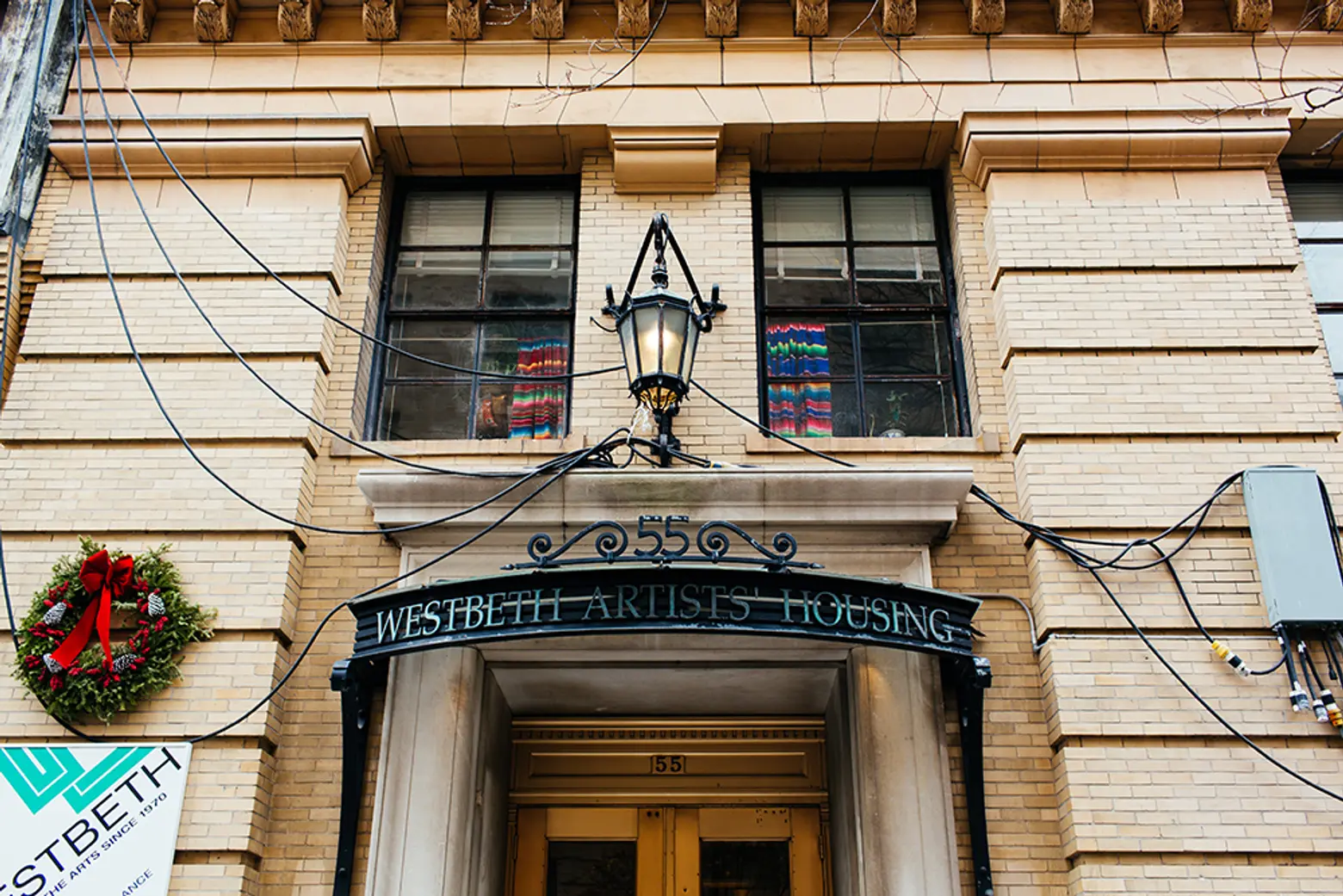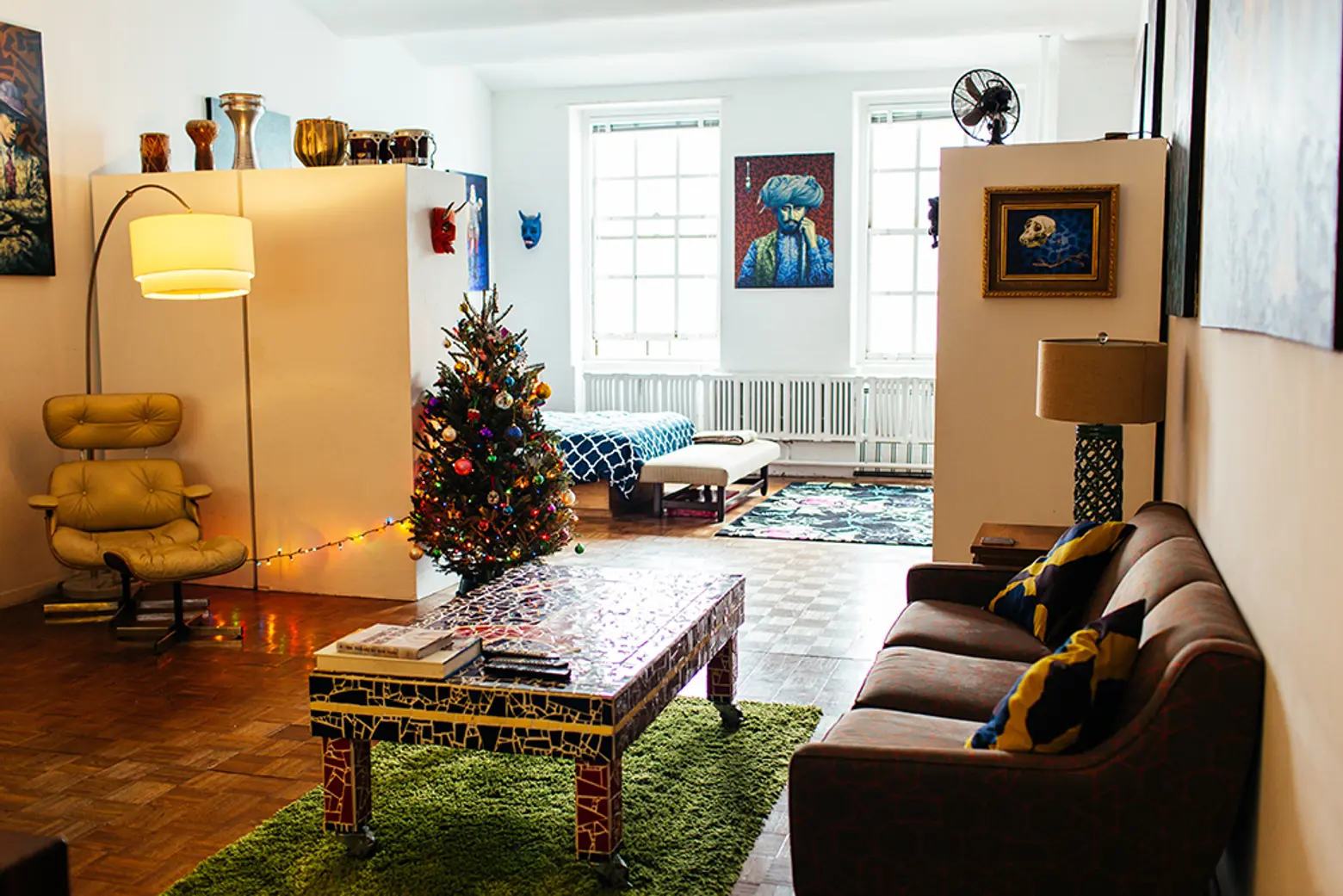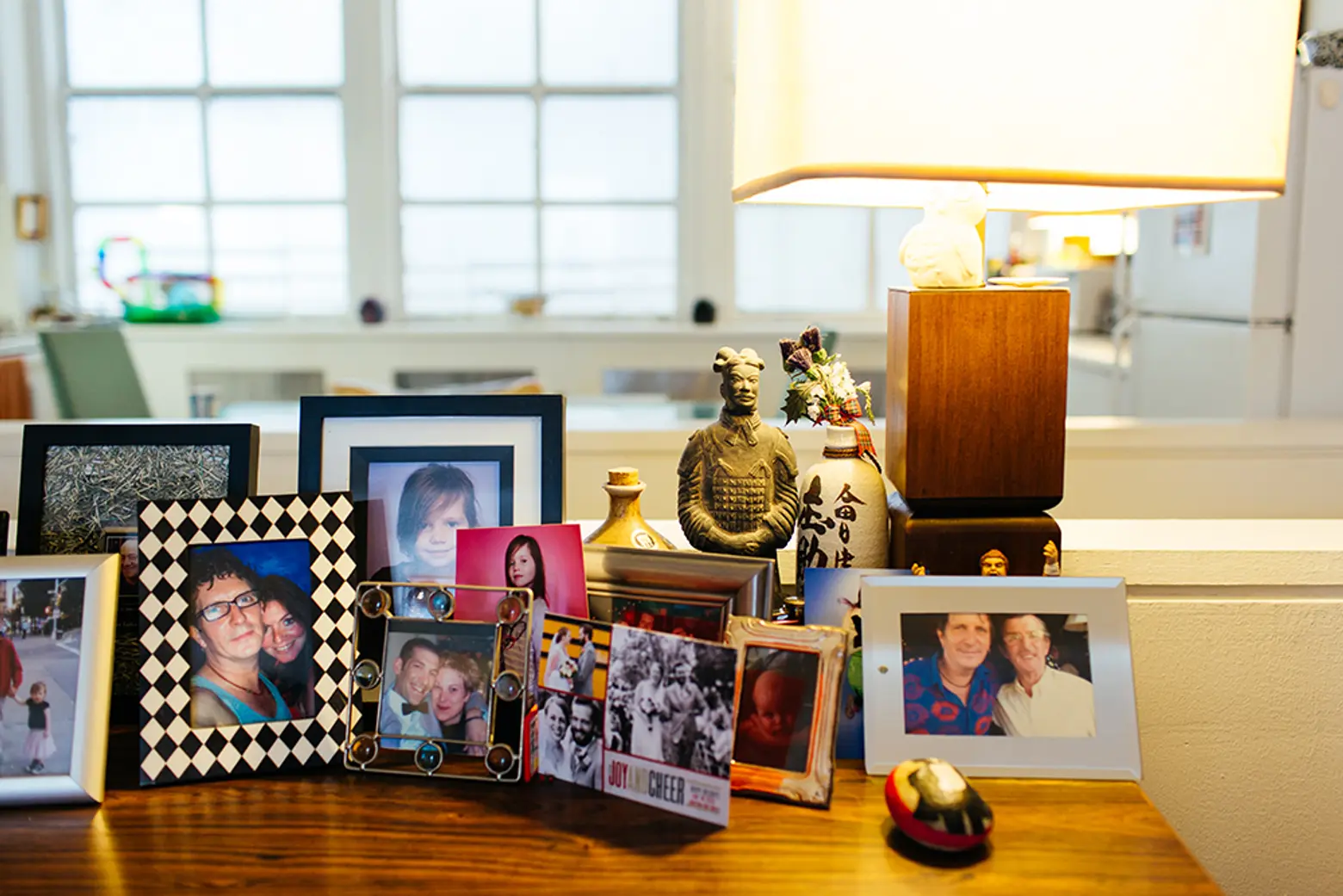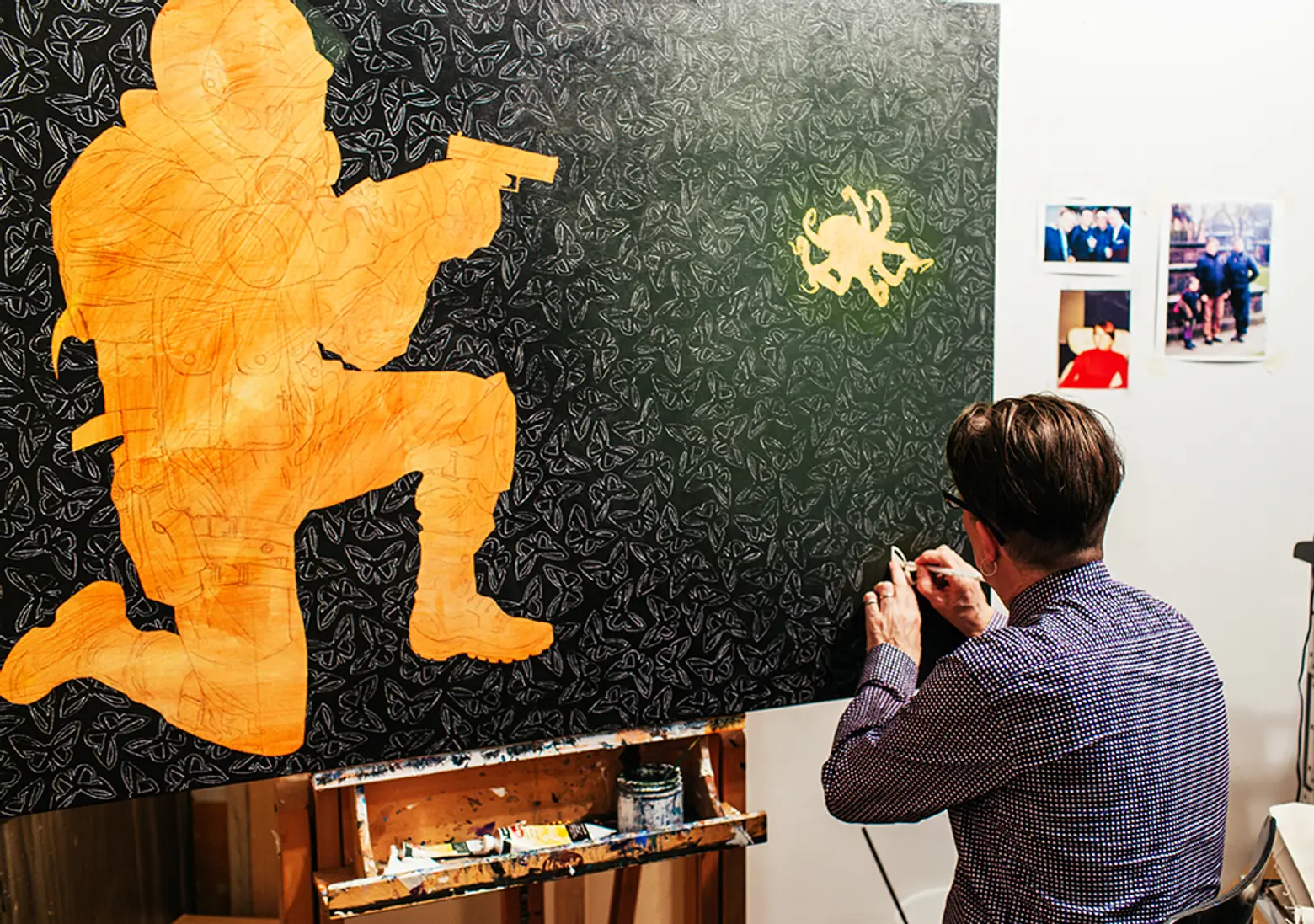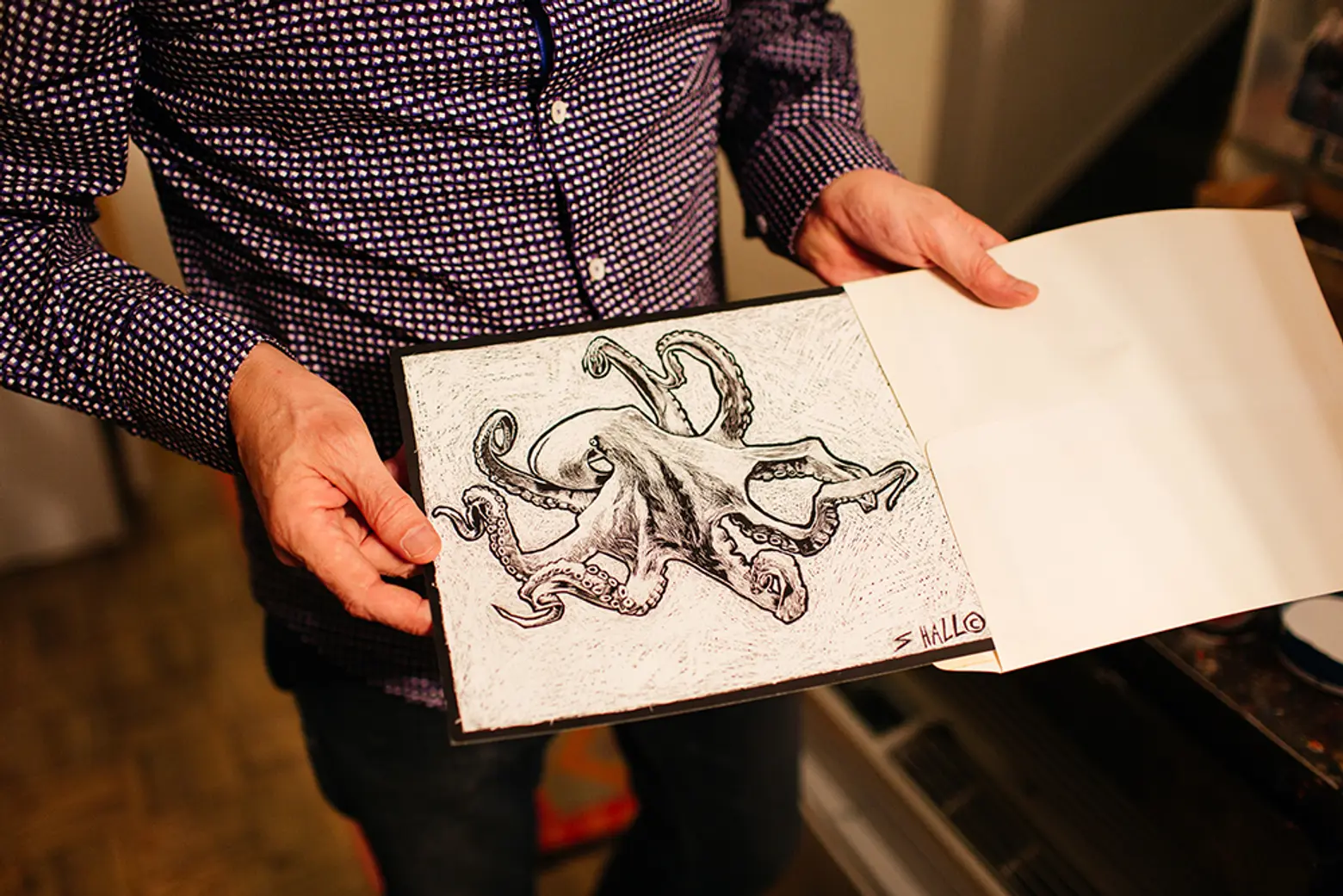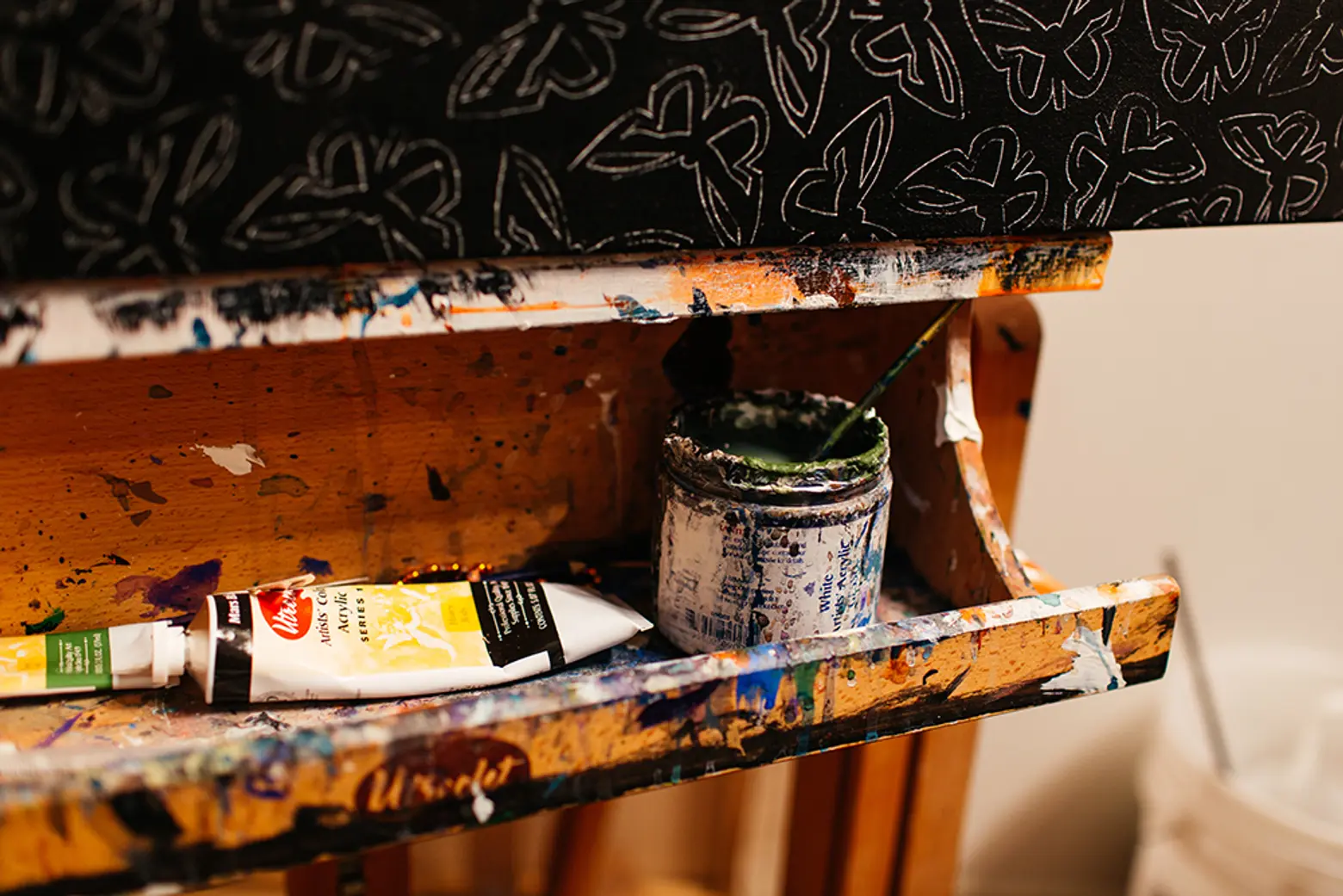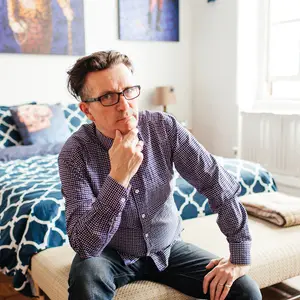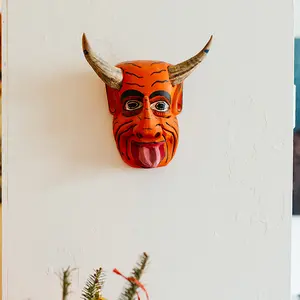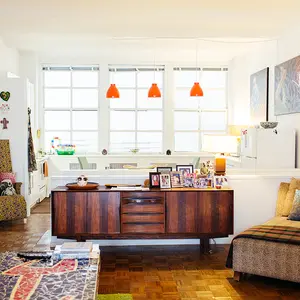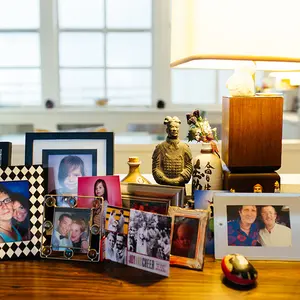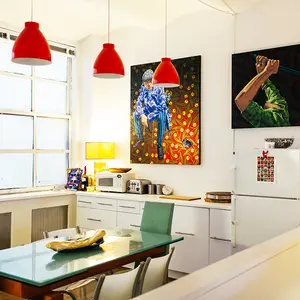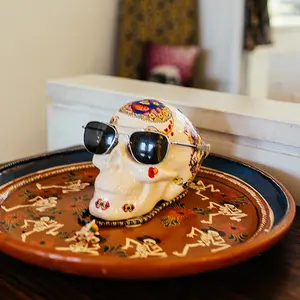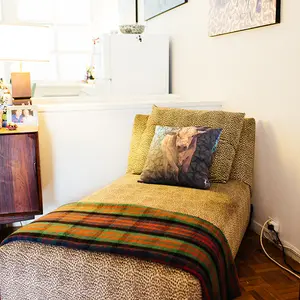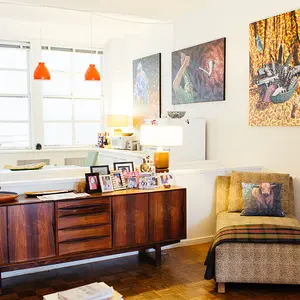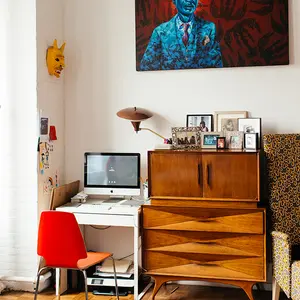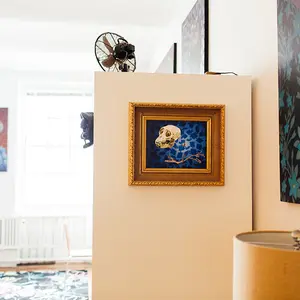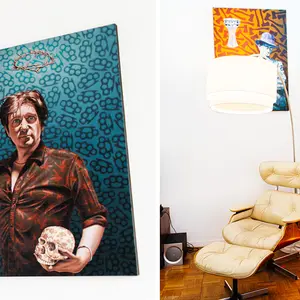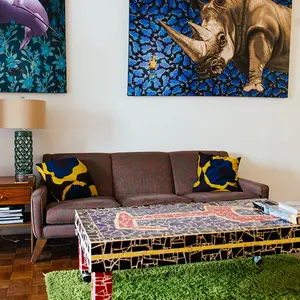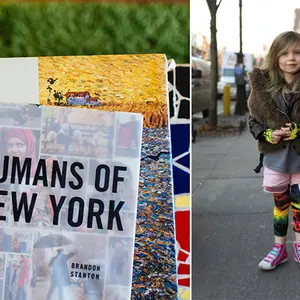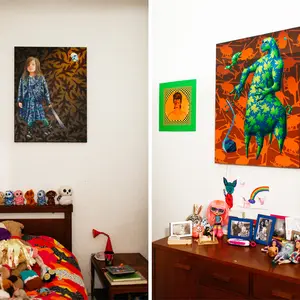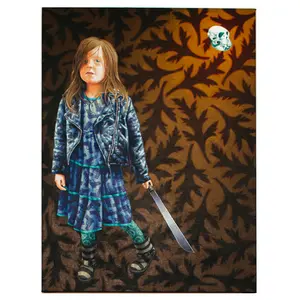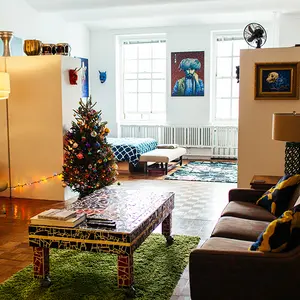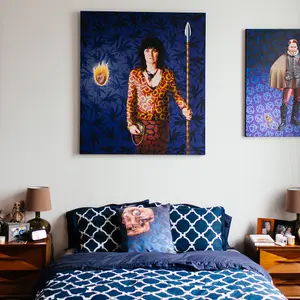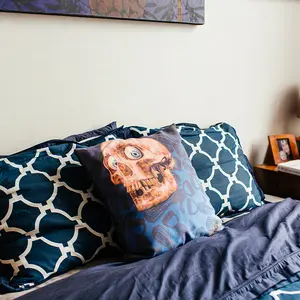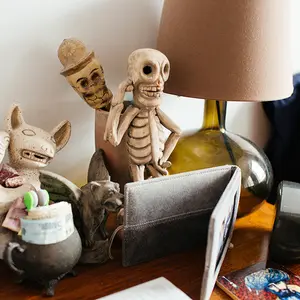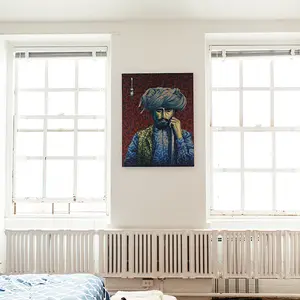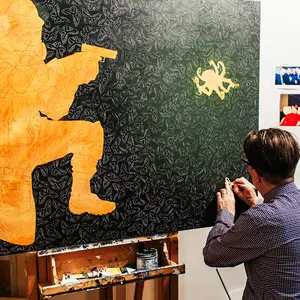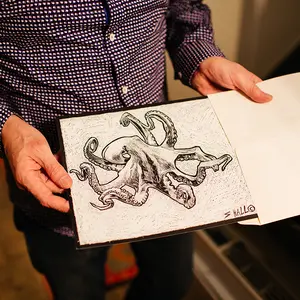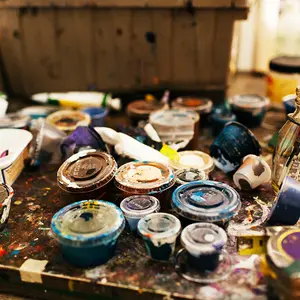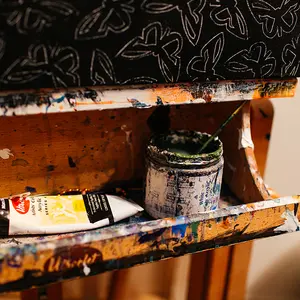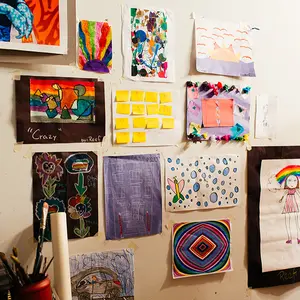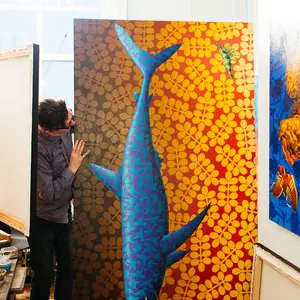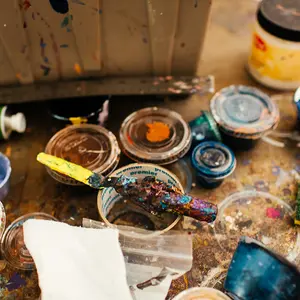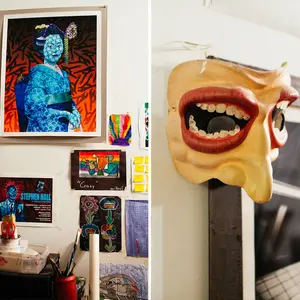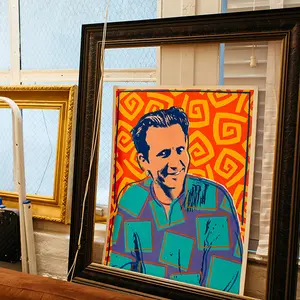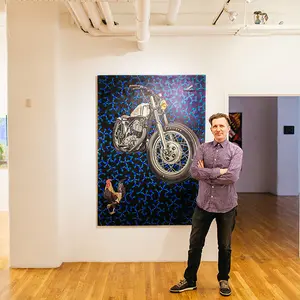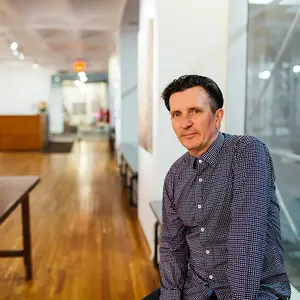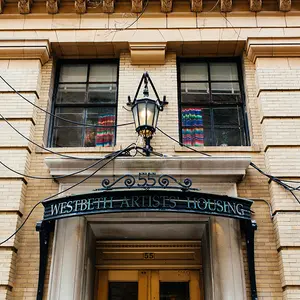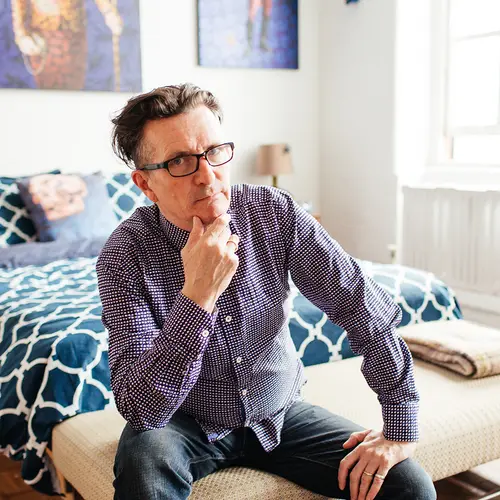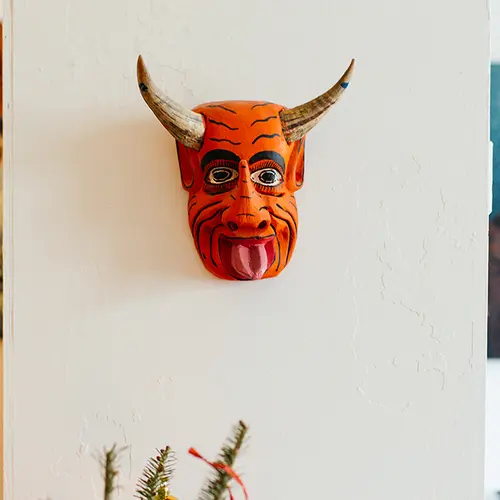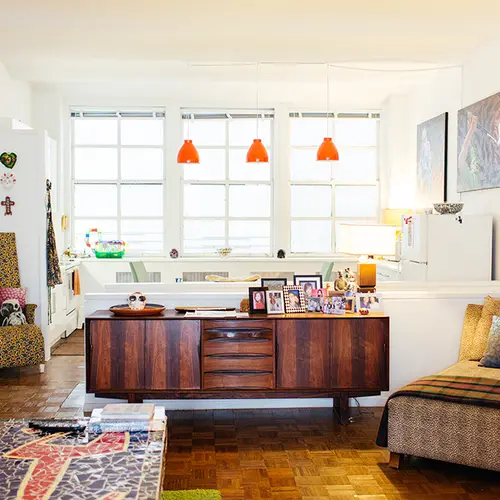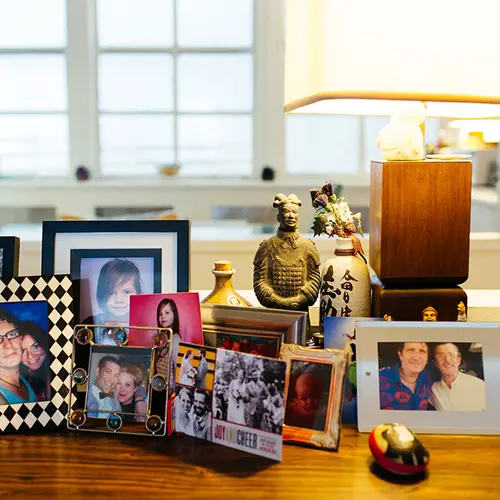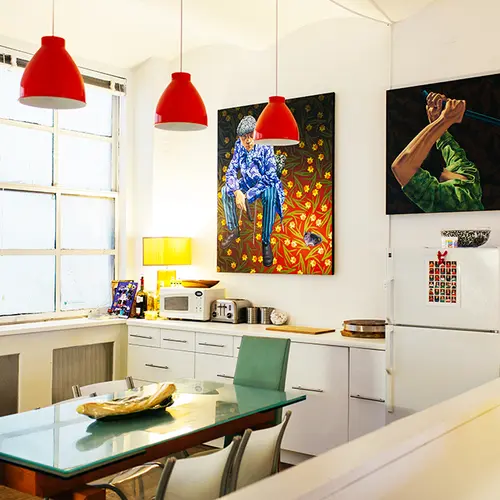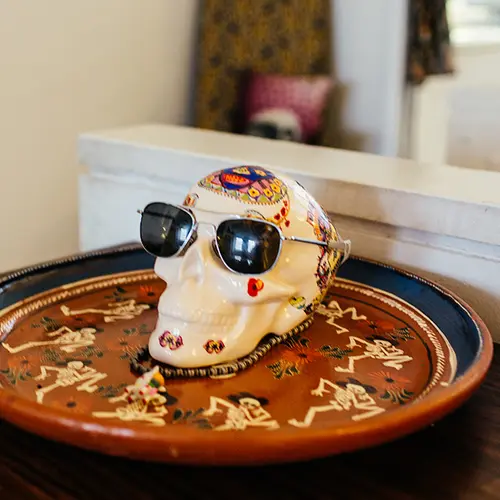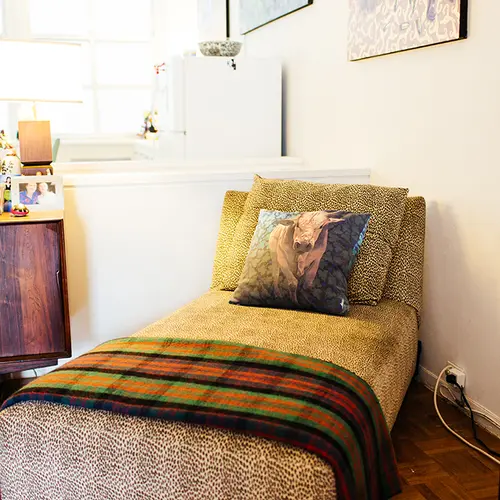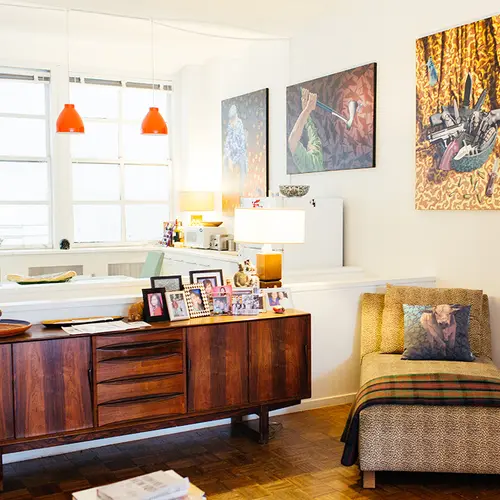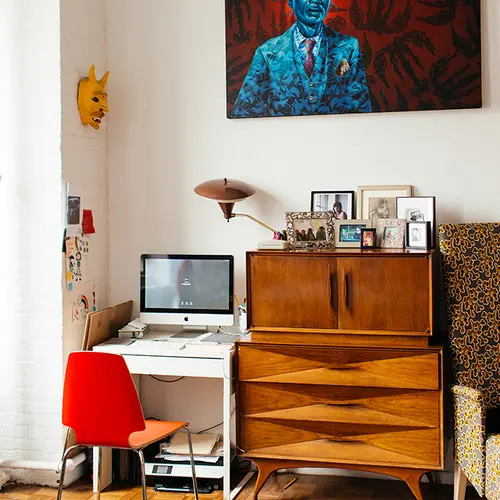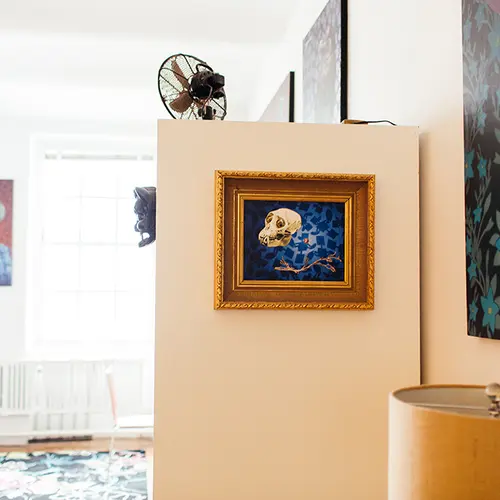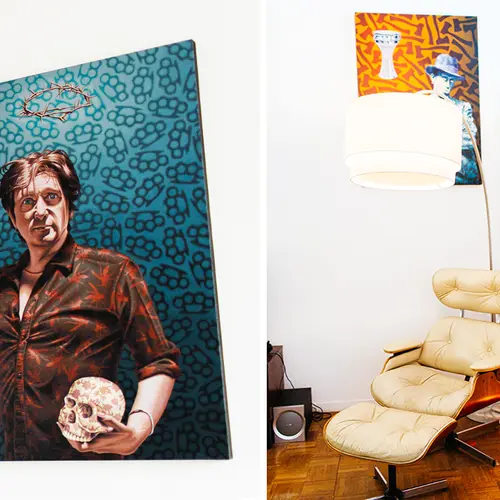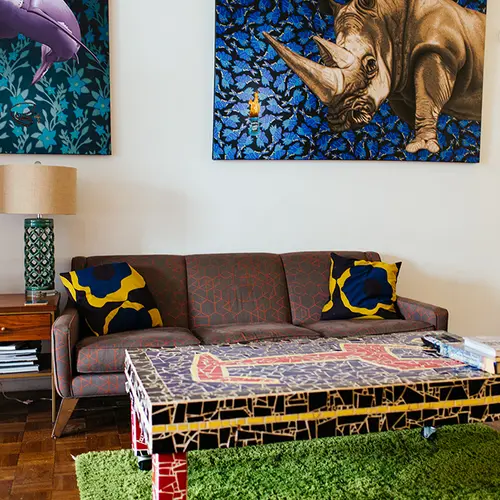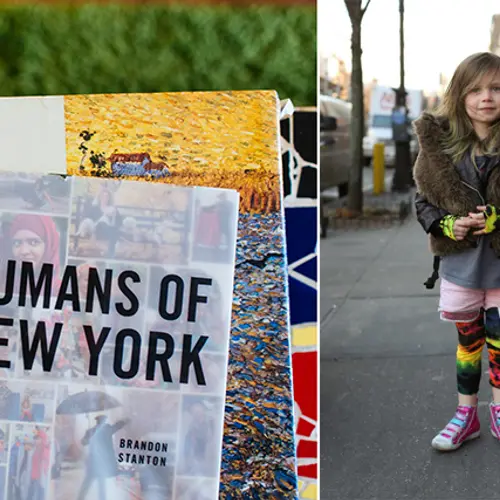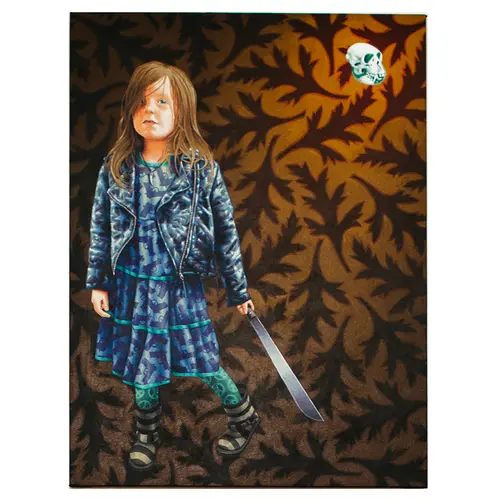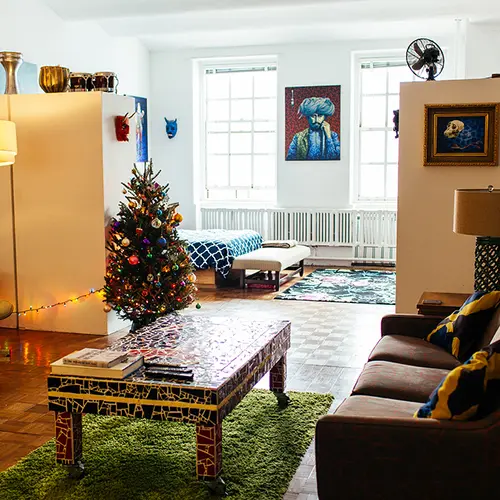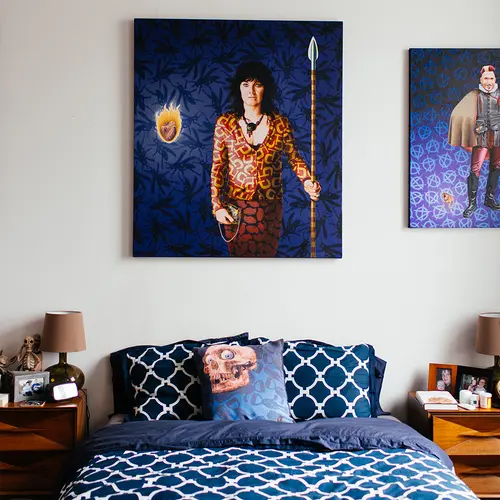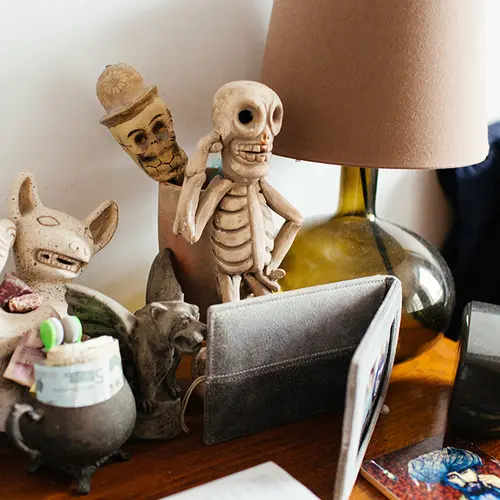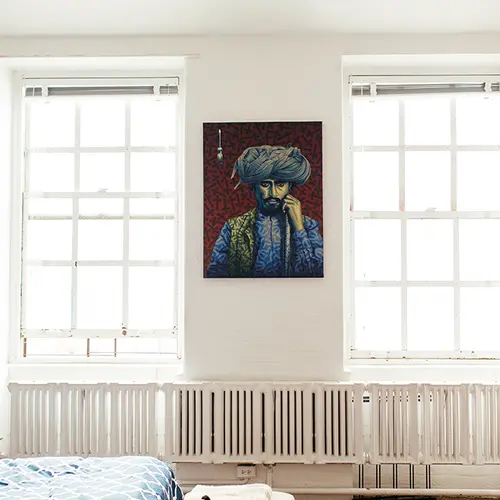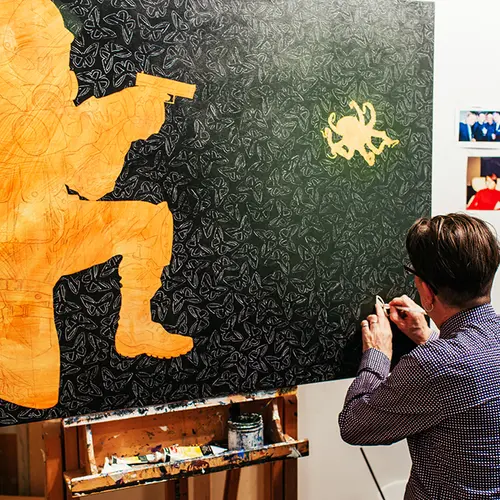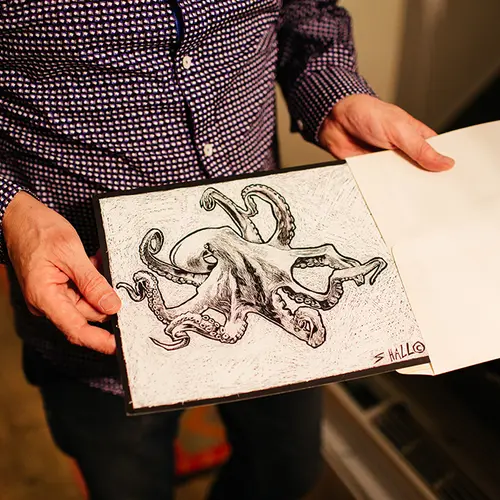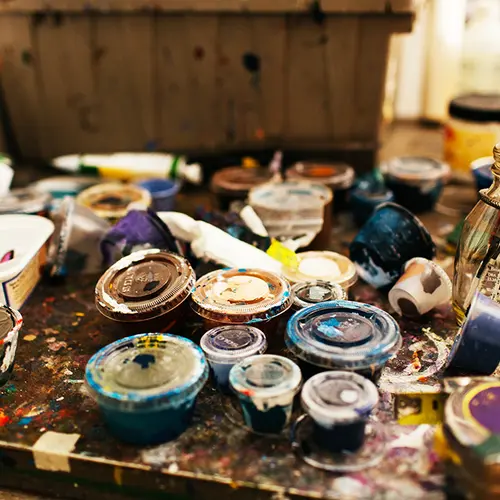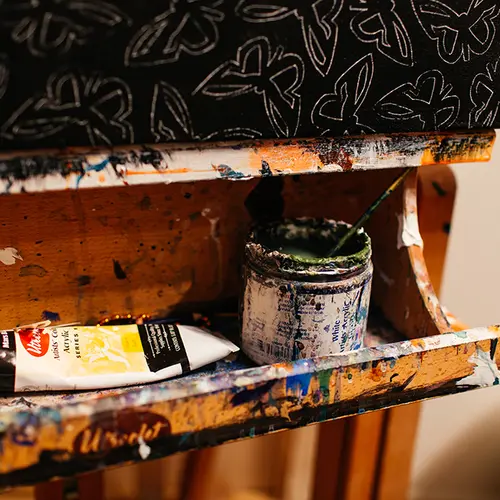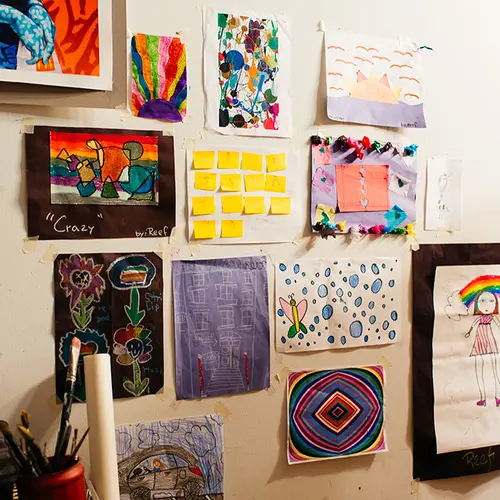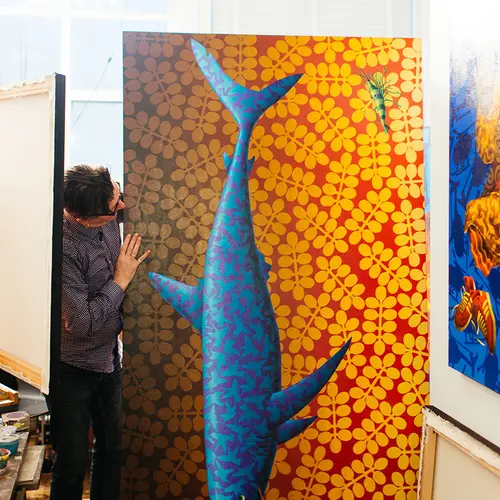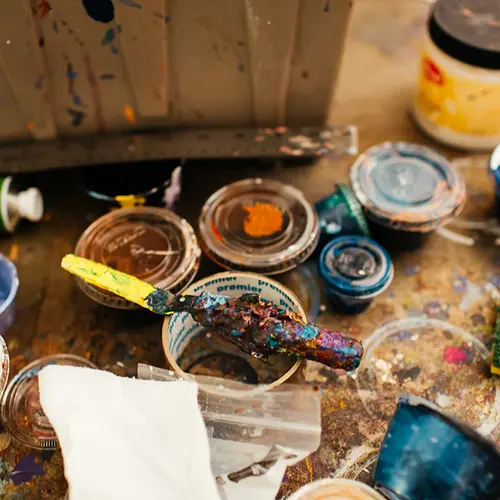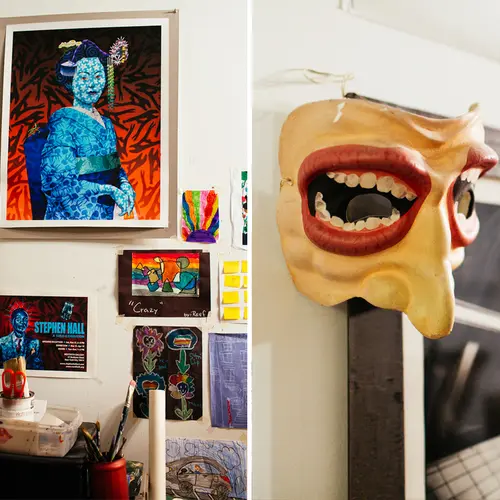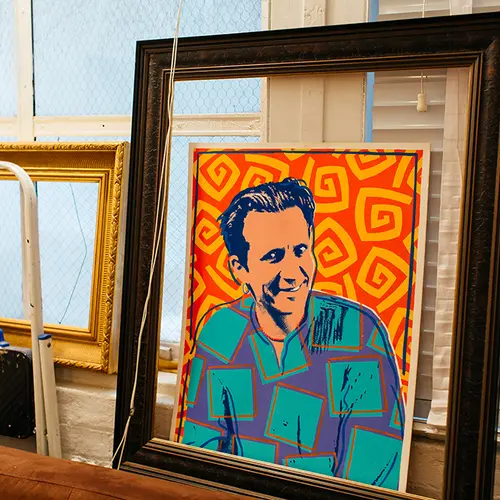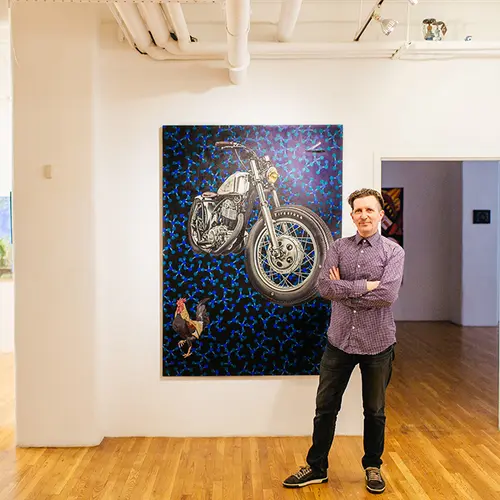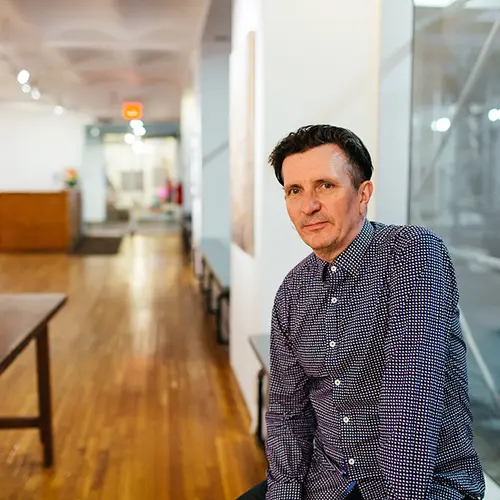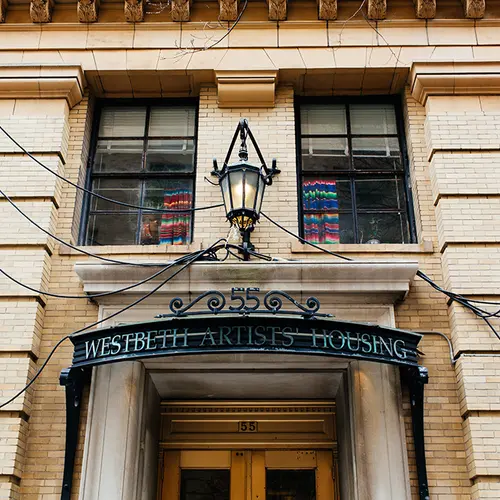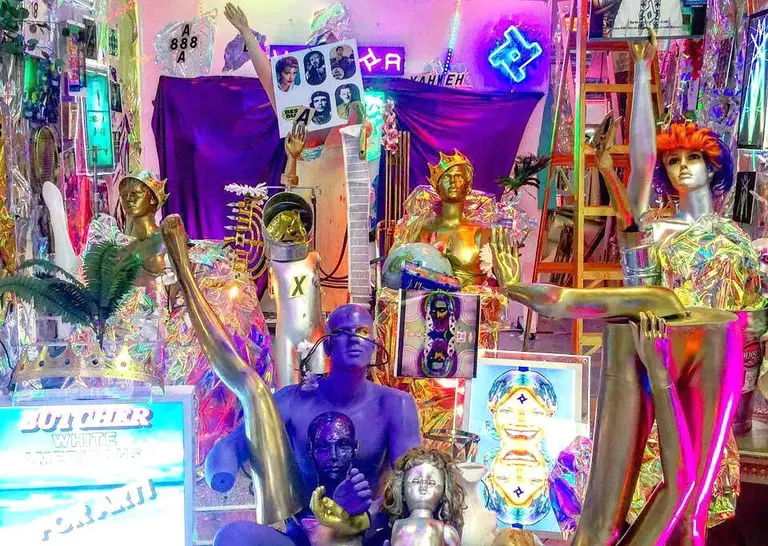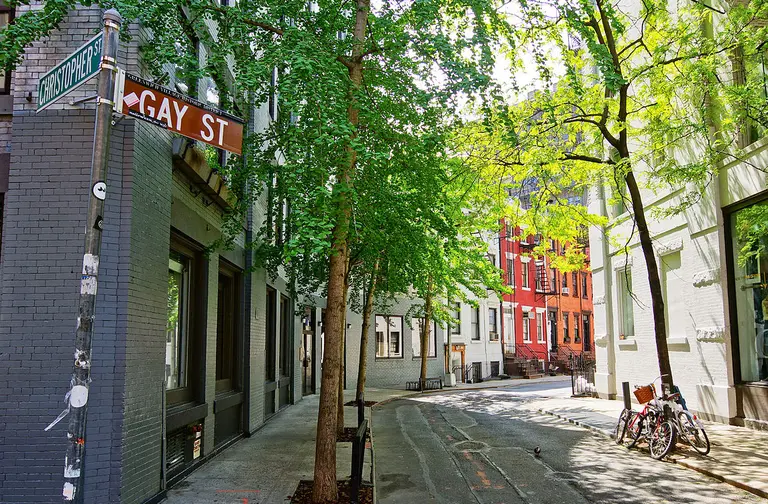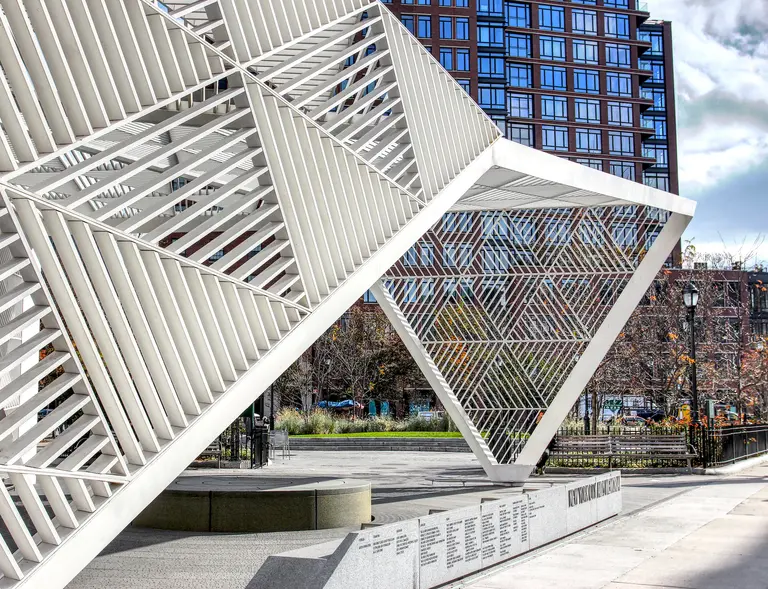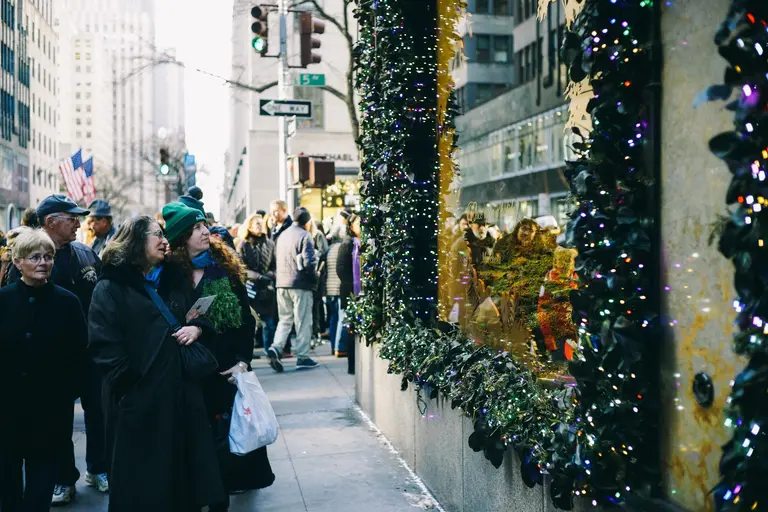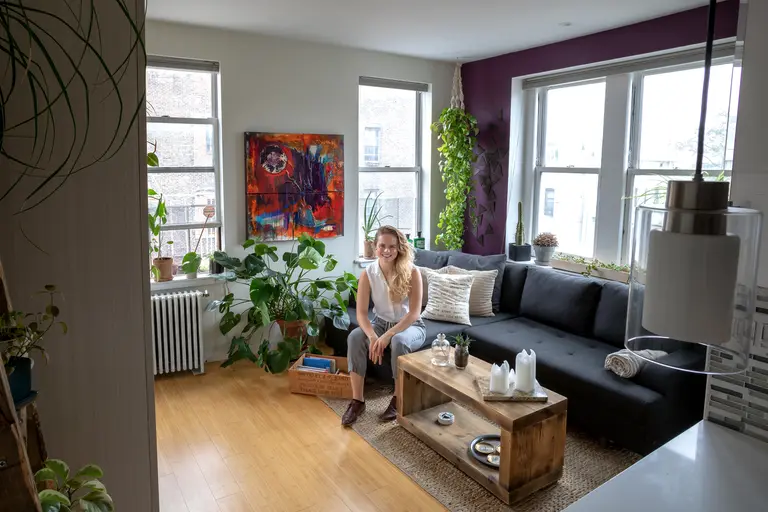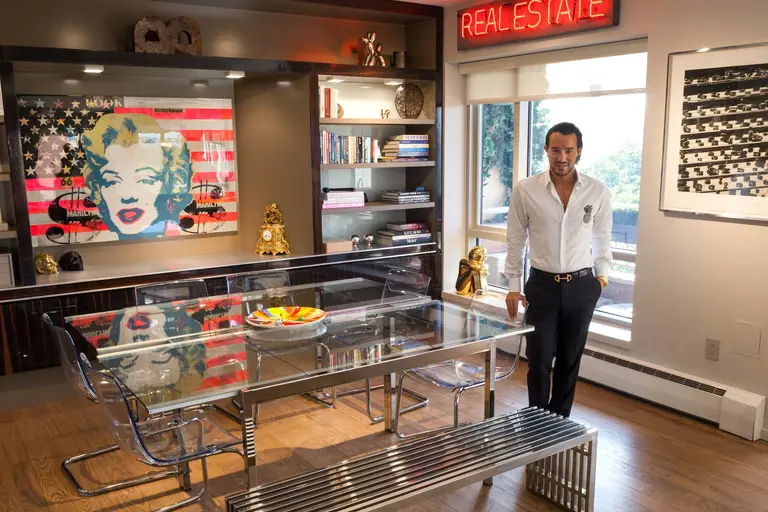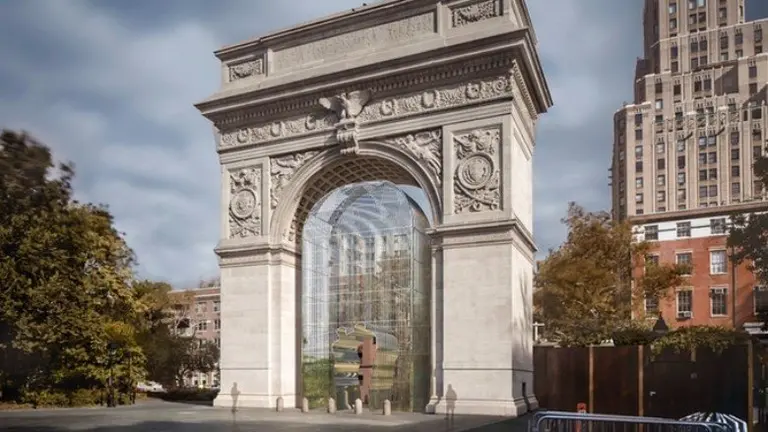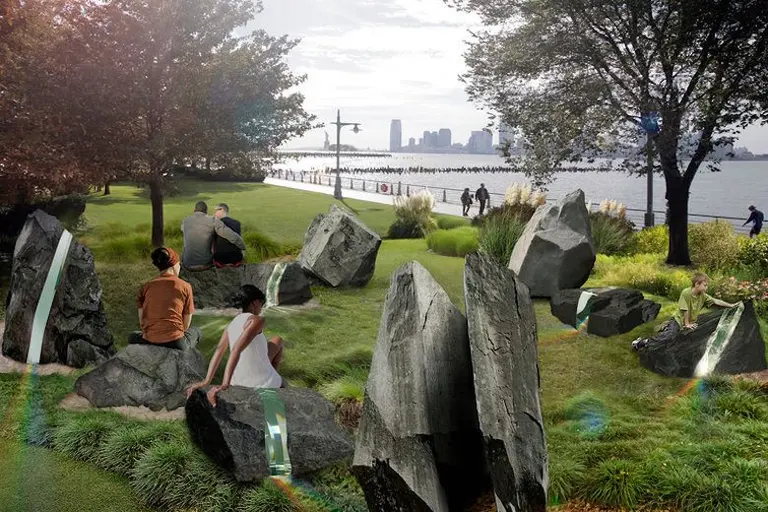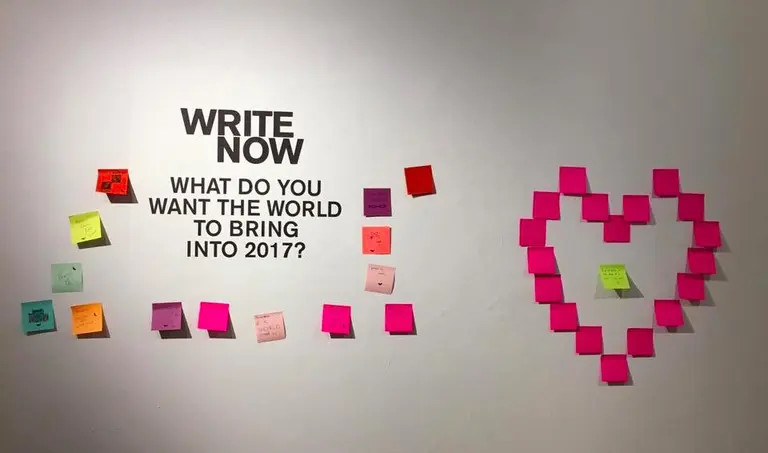My 1,400sqft: Painter Stephen Hall Brings Us Into His Greenwich Village Loft and Studio
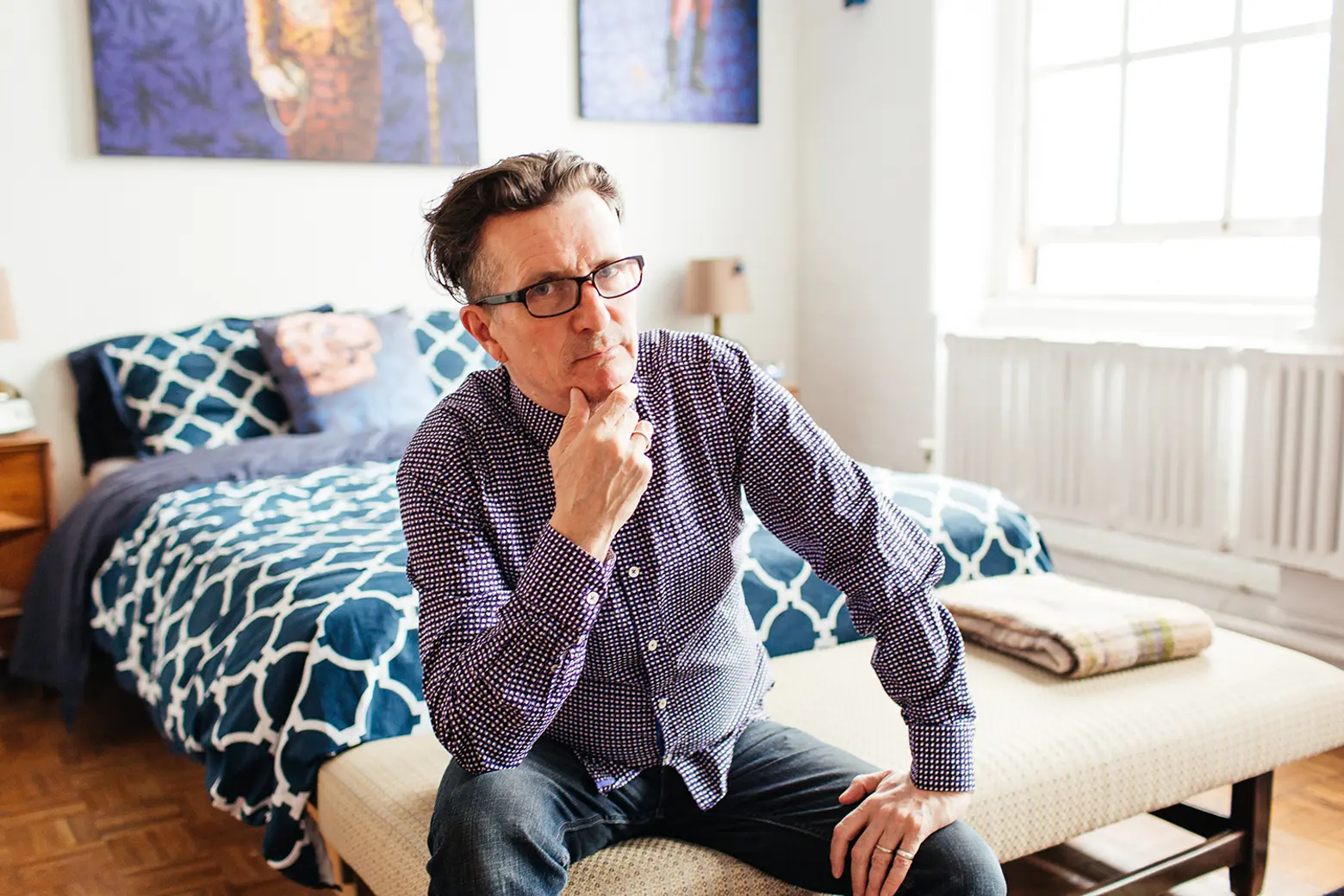
Our ongoing series “My sqft” checks out the homes of 6sqft’s friends, family and fellow New Yorkers across all the boroughs. Our latest interior adventure brings us to artist Stephen Hall’s home and studio in Greenwich Village. Want to see your home featured here? Get in touch!
Since being transformed into homes for artists in the 1970s, Westbeth Artists’ Housing has hosted some of New York City’s most brilliant creatives. And long-time resident and painter Stephen Hall most certainly falls into that set, helping to fill the residence’s walls with thought-provoking ideas for the last 17 years.
Born in Aberdeen, Scotland, Stephen came to New York back in 1978 and began exhibiting his work in the East Village in the early ’80s. Today, his colorful pop-surrealist masterpieces can be found in collections all across the globe, with his paintings now commanding between $5,000-$20,000 a piece. He’s also dreamt up art for major motion pictures, music videos and magazines.
Curious to see the madness and magic behind his Stephen’s off-kilter works—which he describes as “paintings [that] confront us with complex conundrums for which each of many possible solutions may very well tell us as much about ourselves as about the subject at hand”—6sqft recently paid a visit to his duplex loft, a family home that mixes mid-century modern design with pops of color and familiar but fantastical forms.
6sqft: You’re originally for Aberdeen, Scotland. When did you come to New York?
Stephen: I came at the very end of 1978 and I lived at Bayside, Queens for a few years. Then I moved in to the Village. I’ve been at Westbeth for about 17 years now.
6sqft: How did you end up at Westbeth?
Stephen: I just heard about the building and I put my name on the waiting list. I spent 15 years on the waiting list before I got in the building. The first apartment I lived here was probably 600 square feet. Today, the one I share with my wife and daughter is about 1200 square feet.
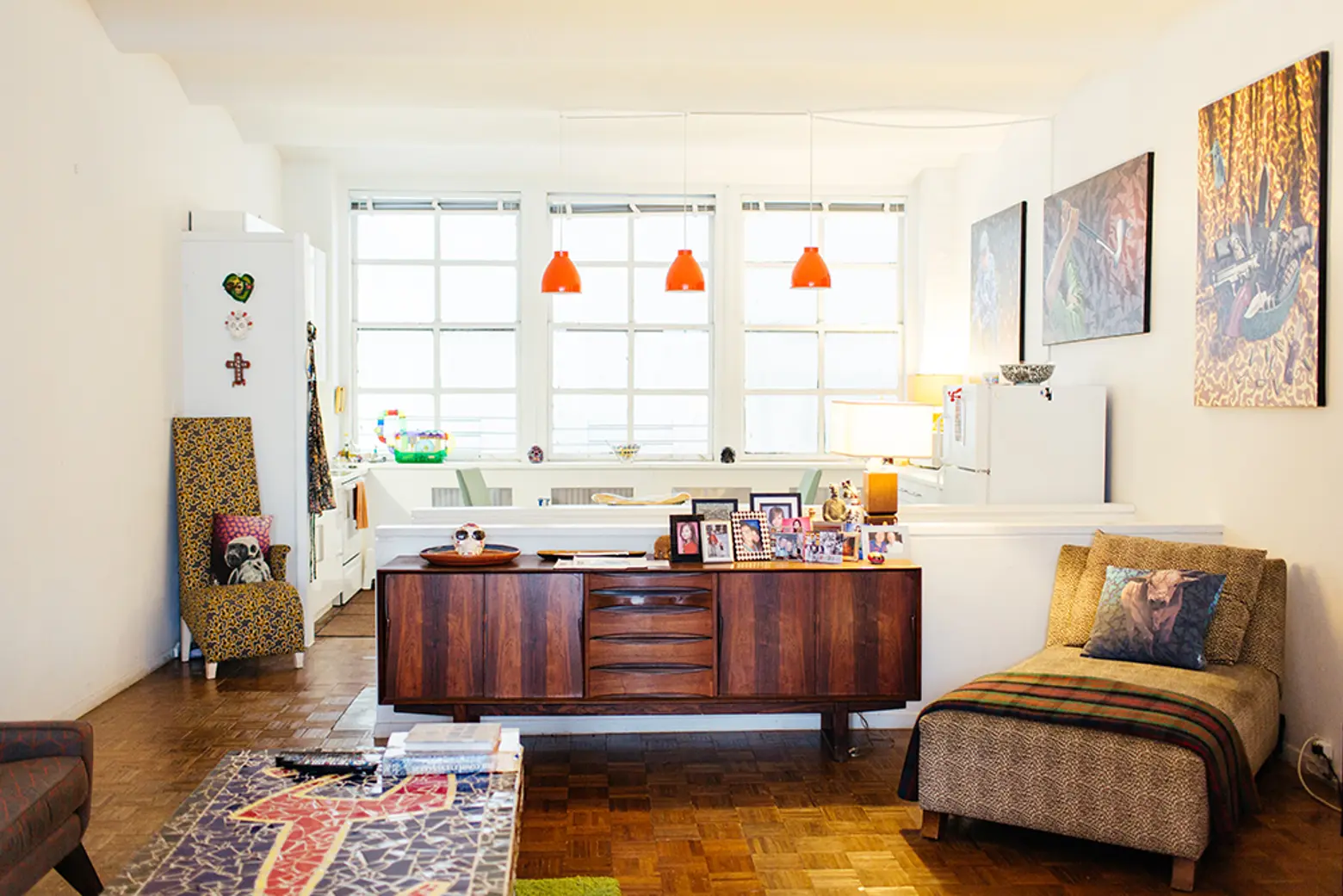
 Pillows, shower curtains and iPhone cases are part of the marketing of his work done by his wife Sam. They give them out and sell them every year.
Pillows, shower curtains and iPhone cases are part of the marketing of his work done by his wife Sam. They give them out and sell them every year.
6sqft: That’s a long time. How has the environment changed over that time?
Stephen: Well, unfortunately a lot of the original tenants have been dying off because, you know, they moved in as artists back in late 60s and early 70s. But I know more people now than when I first moved in. It’s really just a matter of time, really getting to know people. Westbeth is an active community. We’re in many ways our own neighborhood. We have gallery shows, dance performances and music festivals—there’s always something going on here. If you want to be active in New York’s arts community, this is the place to do it.
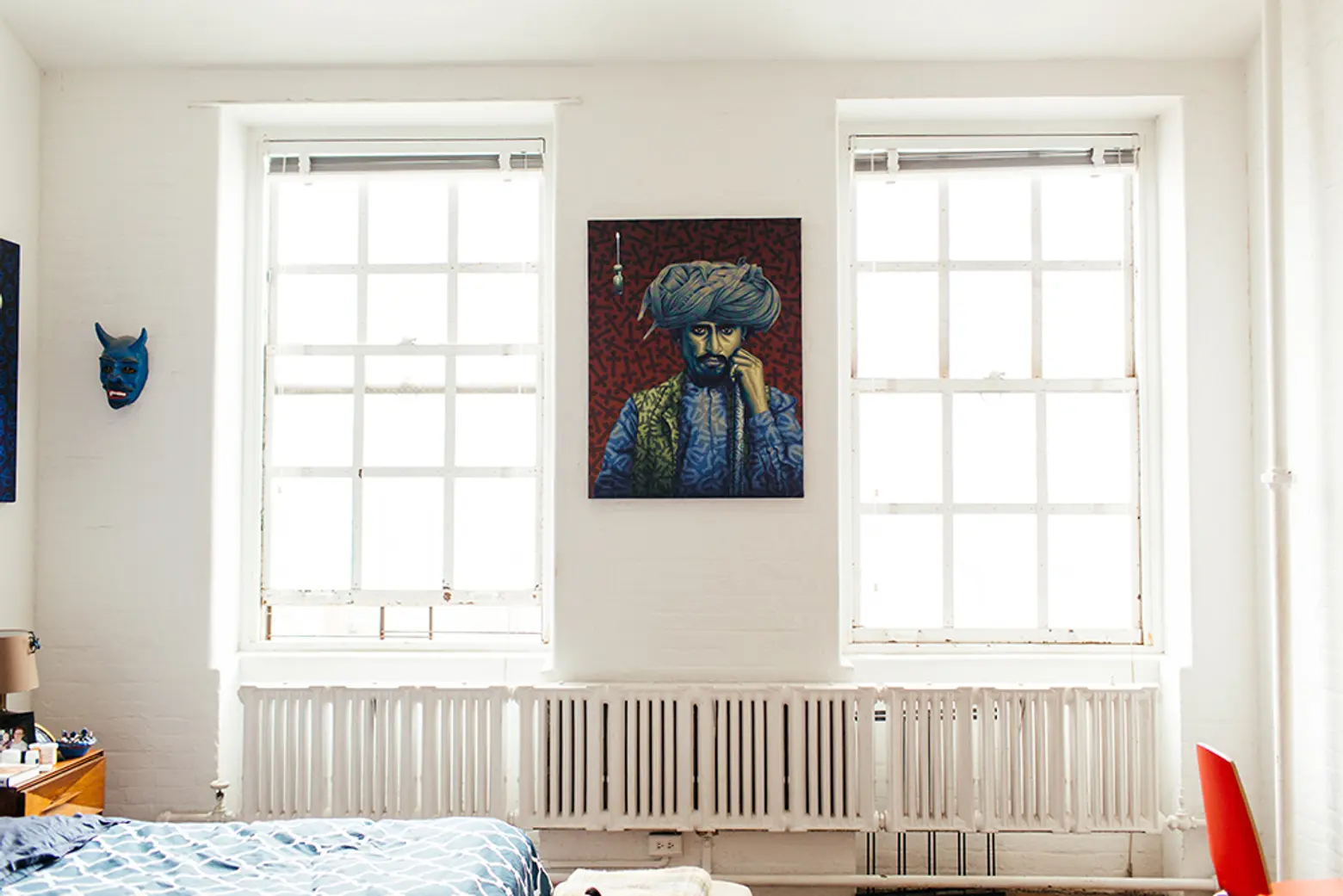
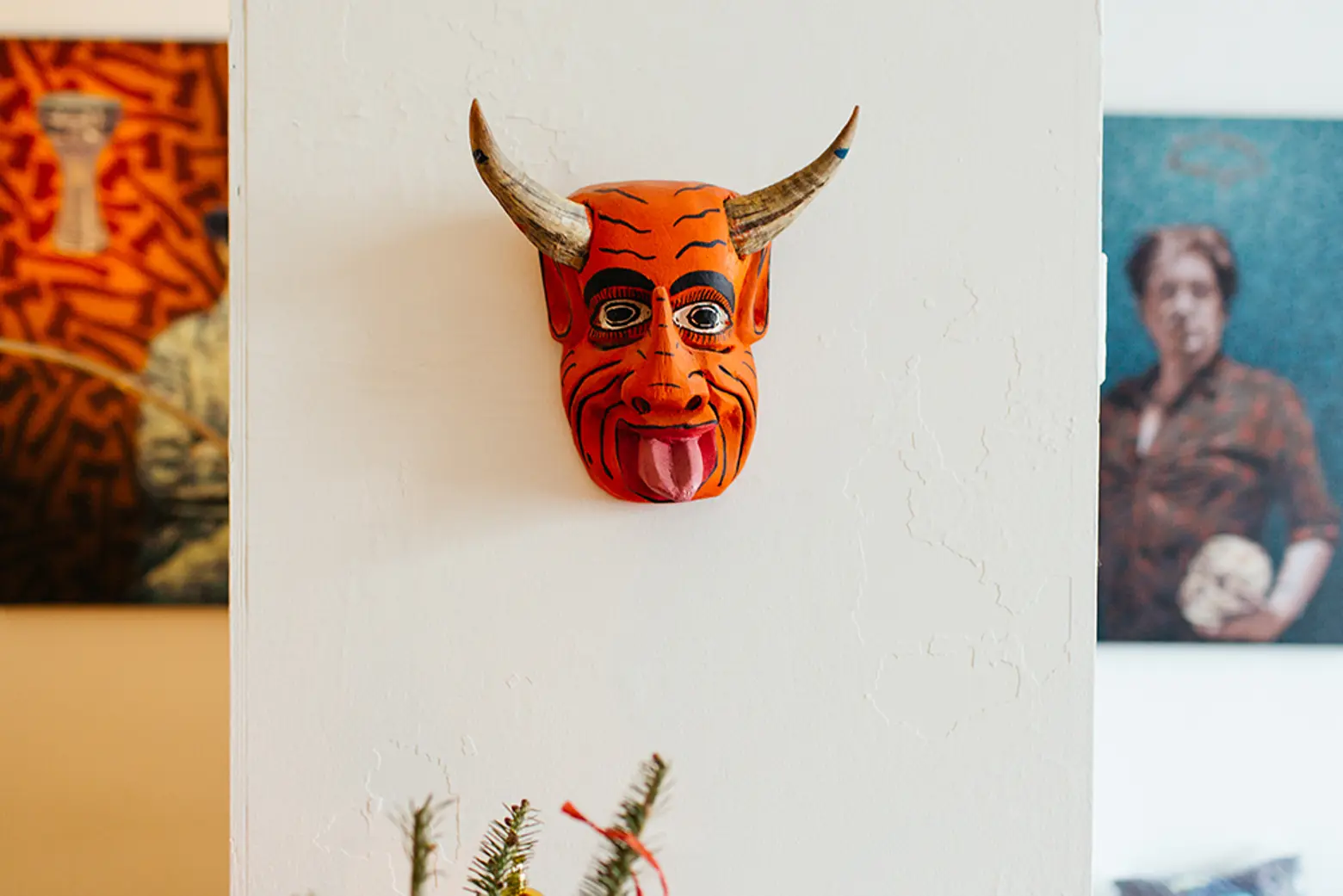
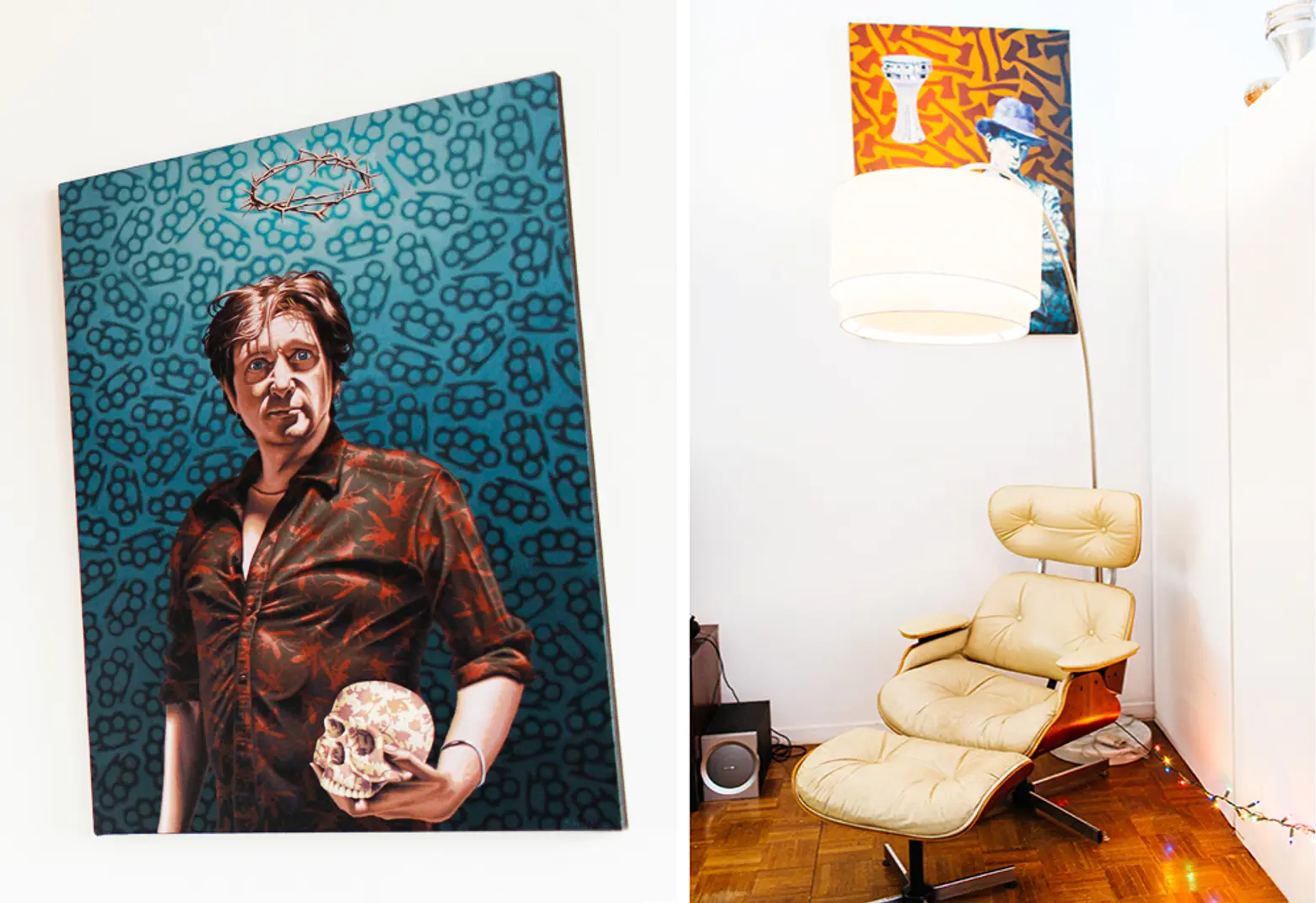
6sqft: What are some of your favorite spots in the neighborhood, current and bygone?
Stephen: I miss—quite a lot at the moment—the mom and pop stores. They’ve been replaced with banks and nail salons. There used to be quite a lot of really little stores; stationary places, shoemakers and candy stores. They’re all gone now, so I miss that. But that’s really just endemic in the city. It’s happening all over.
Like most people in Manhattan, I don’t really leave my neighborhood that much. Above 14th Street used to be rare, and I think now it’s a never. We stick about and around here, everybody knows everybody. If we go to this bar/restaurant—it’s called Hudson Hound up on Hudson Street—and we sit outside, someone will always stop by and say, “Hi. How’s it going?” The village is filled with neighborhood people, and that’s wonderful.
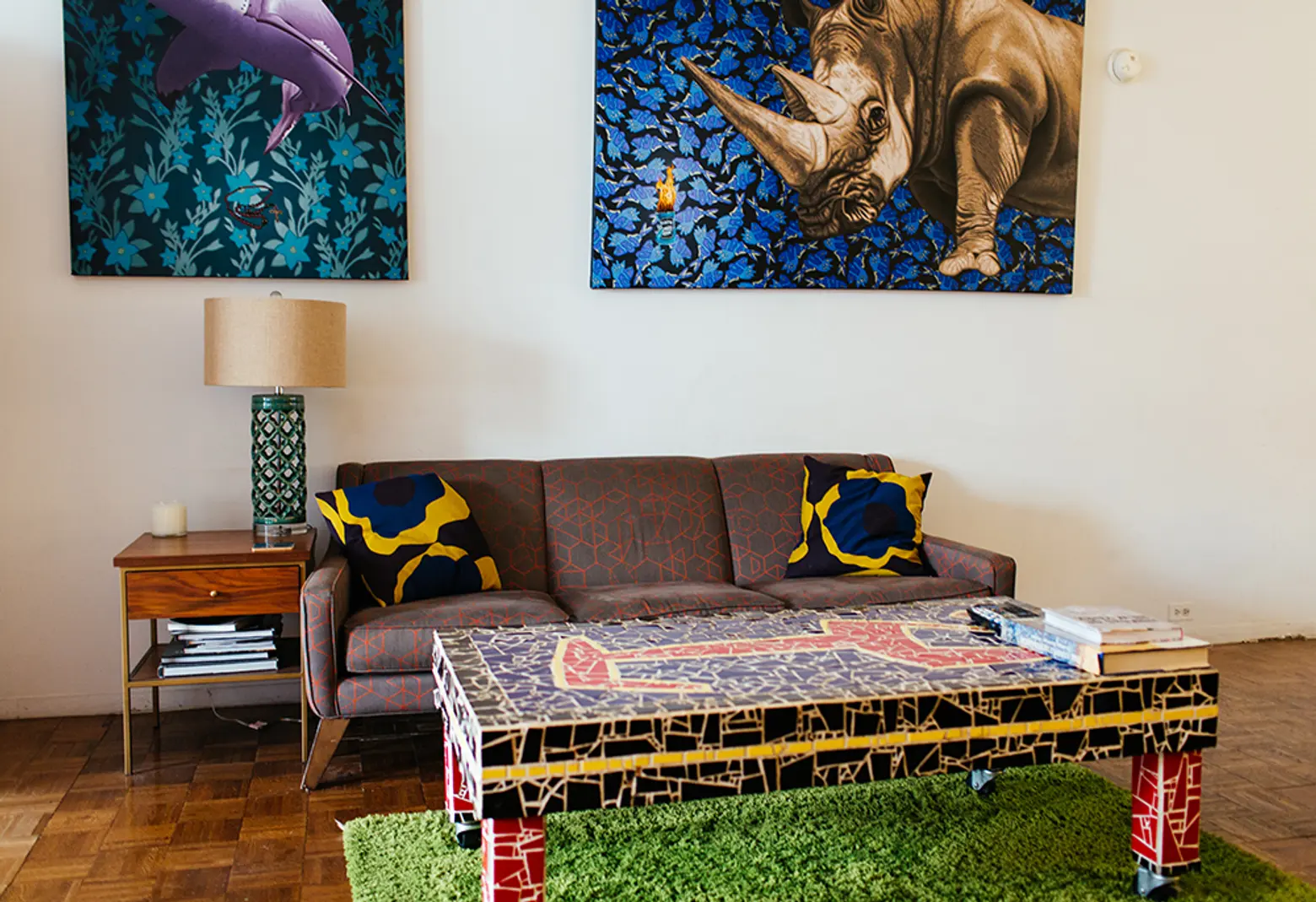 Stephen built the above mosaic table using packing tape and 2x4s
Stephen built the above mosaic table using packing tape and 2x4s
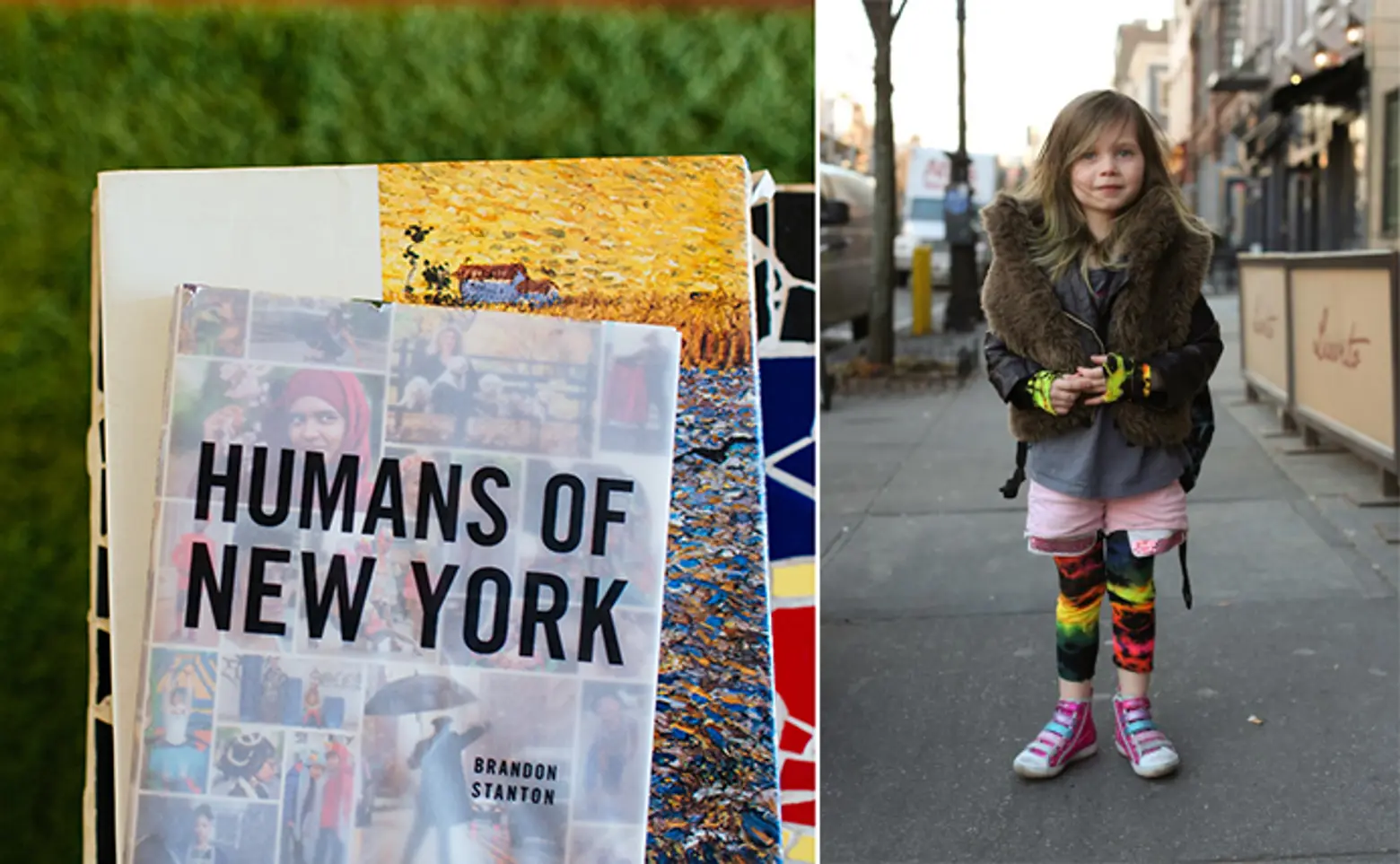 Stephen’s daughter, Reef, is featured in the book “Humans of New York.” Her caption reads: “We ordered her those pants, and as soon as they arrived, she cut off the bottoms and made a pair of gloves.” Image (R) © Humans of New York
Stephen’s daughter, Reef, is featured in the book “Humans of New York.” Her caption reads: “We ordered her those pants, and as soon as they arrived, she cut off the bottoms and made a pair of gloves.” Image (R) © Humans of New York
6sqft: Do you think that the creative spirit of New York will survive all these changes?
Stephen: Yeah it is tough. Like this place, this building, has saved my life as it were. I wouldn’t be able to stay in New York City and raise a kid and paint. It’s rent controlled and the rent is very reasonable—and I’ve got work space. But people are moving further and further afield, and it’s a shame. Now, people have to roommate or live with a number of other people. Having your own place is no longer an option if you don’t have a lot of money.
I think eventually people are going to move further and further out to places like Detroit. Our building is pretty protected from change. It’s a landmark and we can’t get thrown out. But it’s become all closed in. It’s so expensive around us and we find it really expensive. We rarely go out to eat anywhere around here. I used to be able to go across the street to a Chinese restaurant and get lunch for $3.50. I know it’s not 10 years ago, but it was a little mom and pop Chinese restaurant and all the neighborhood people used to go in there. Now it’s just getting harder, and that’s a shame.
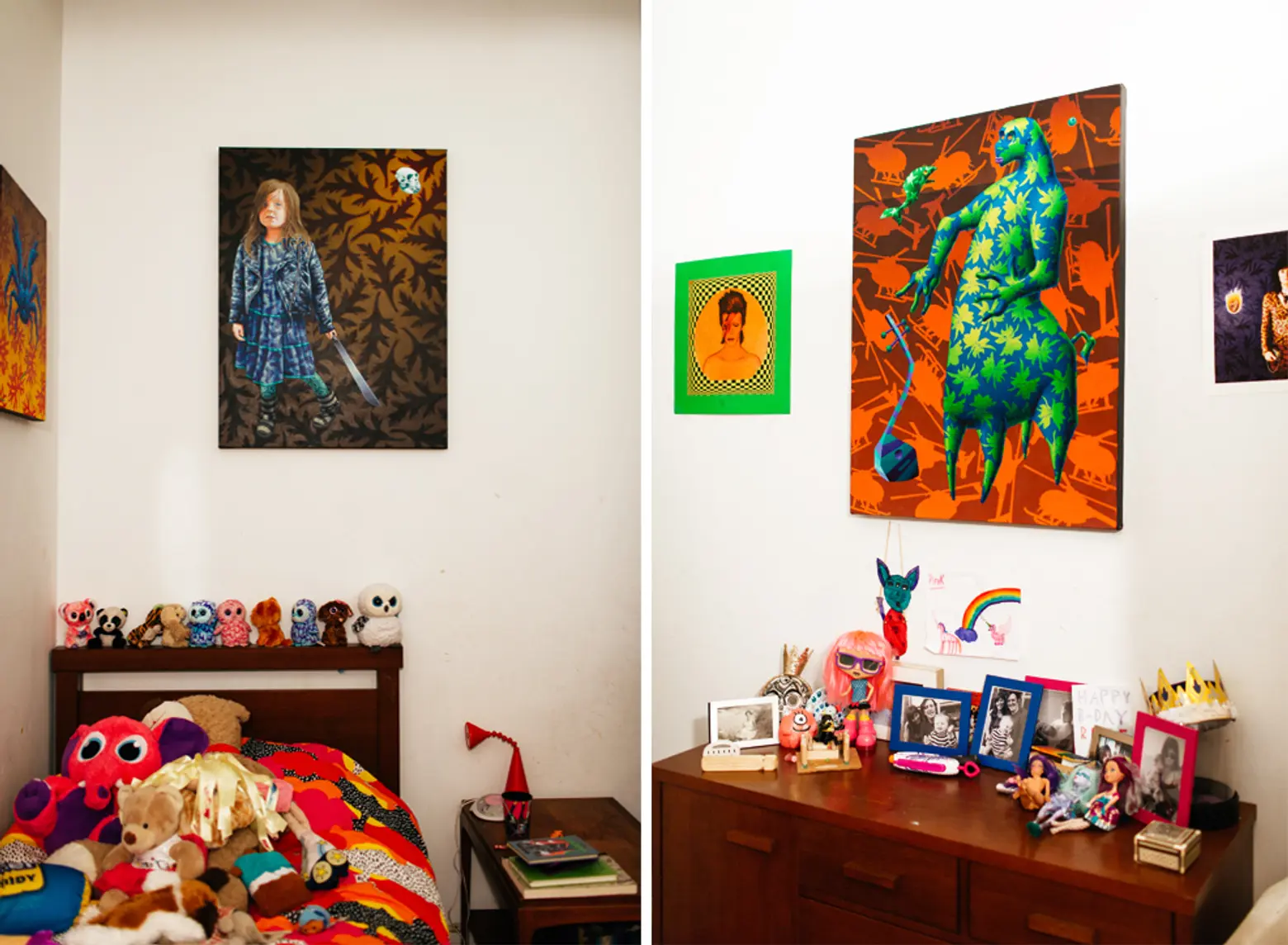 Inside Reef’s room. A portrait of her painted by Stephen hangs above the bed.
Inside Reef’s room. A portrait of her painted by Stephen hangs above the bed.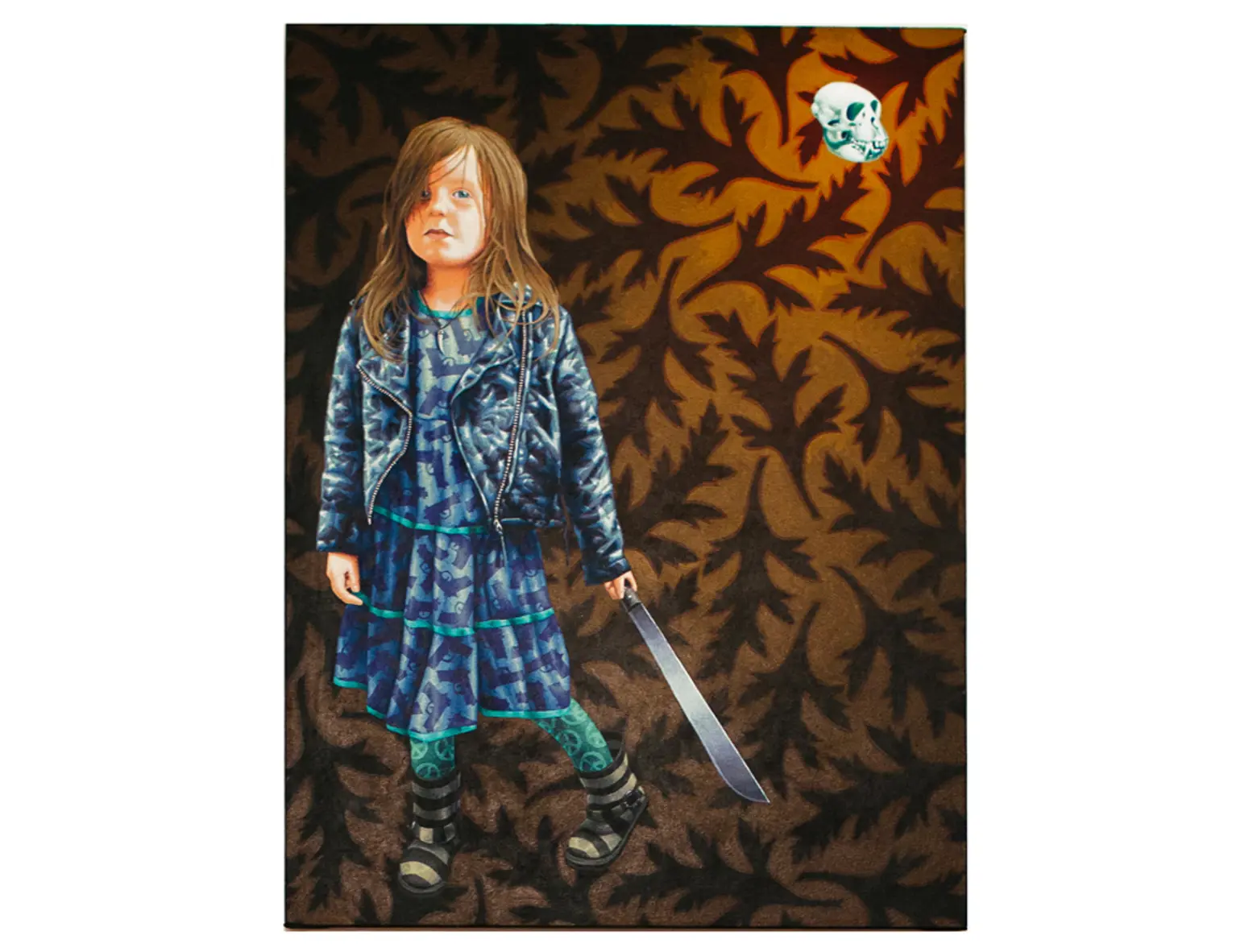
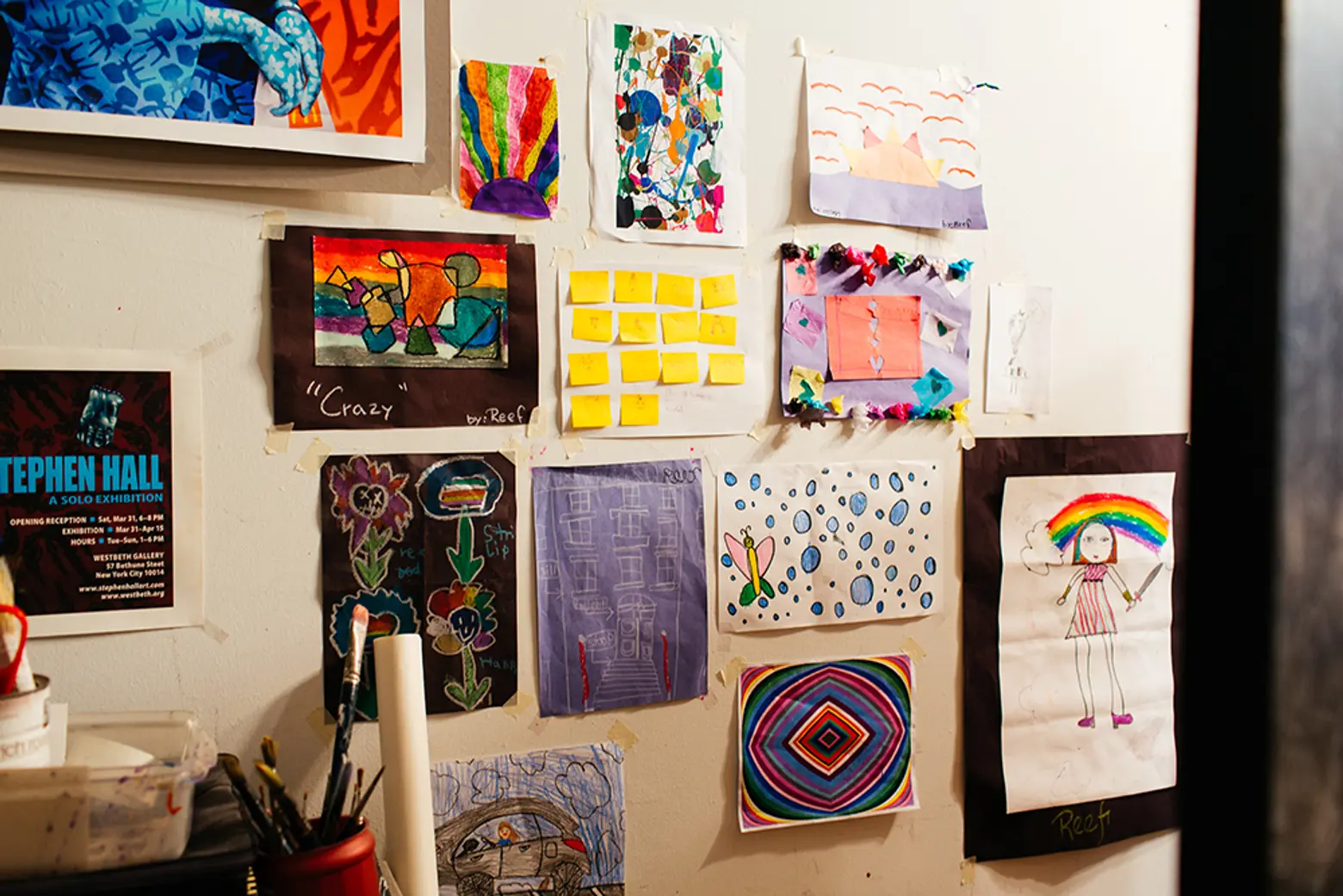 Reef’s artwork can be found on a dedicated wall in Stephen’s studio.
Reef’s artwork can be found on a dedicated wall in Stephen’s studio.
6sqft: What’s it like raising a kid at Westbeth?
Stephen: It’s great. There are tons of kids here. I mean, literally in our corridor alone, my girl and her four friends are always together. They can have friends over and they take their scooters all around. It’s safe, and as you know in Manhattan, that’s a really difficult thing for kids to find. And it doesn’t matter whether you live in a townhouse or apartment, you can’t really just say, “Oh yeah, go ahead and play.” But here you can. In the summertime there are tables laid out and we’ll go down and have a picnic lunch and the kids will just run around playing.
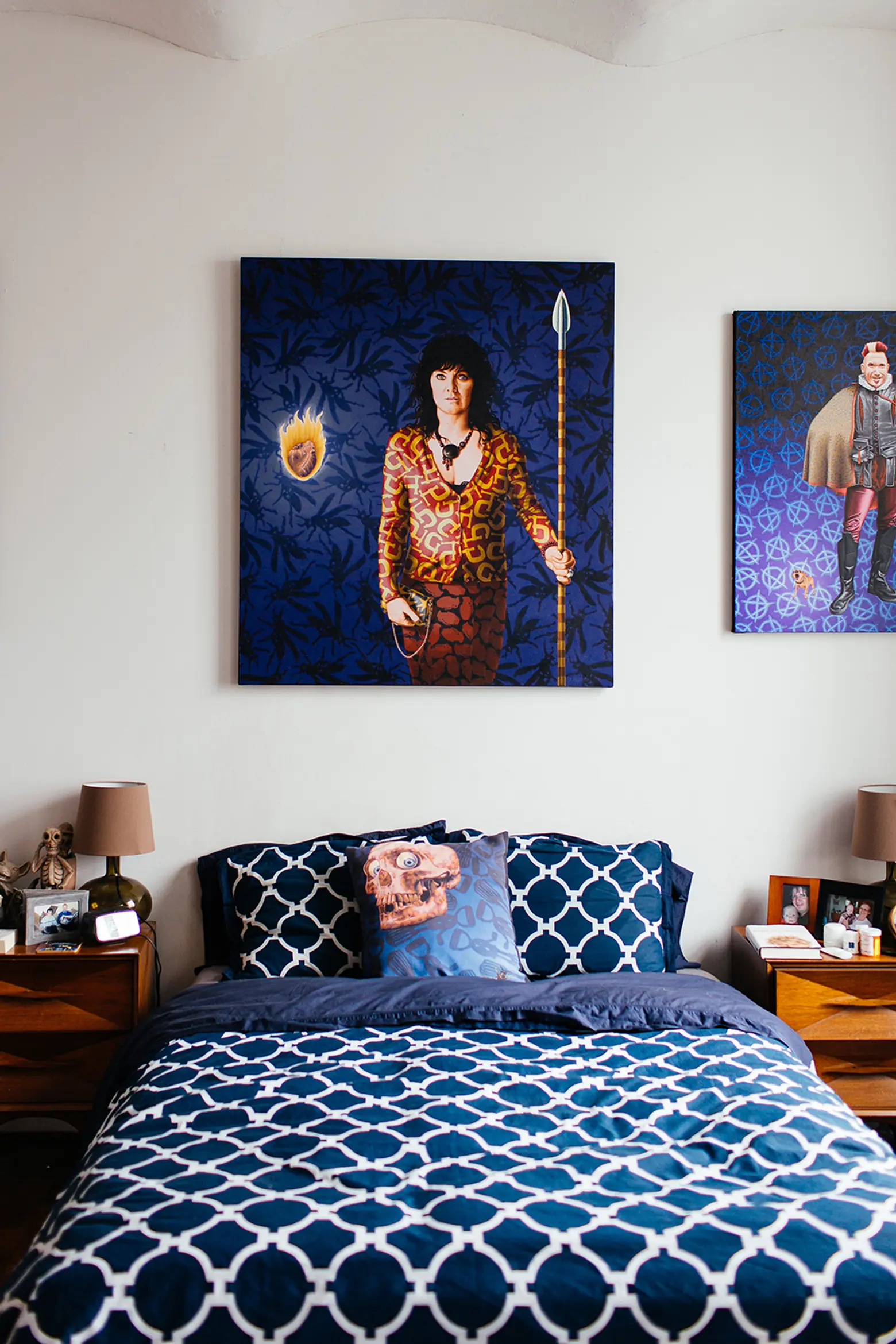 A portrait painted by Stephen of his wife Sam sites above the bed
A portrait painted by Stephen of his wife Sam sites above the bed
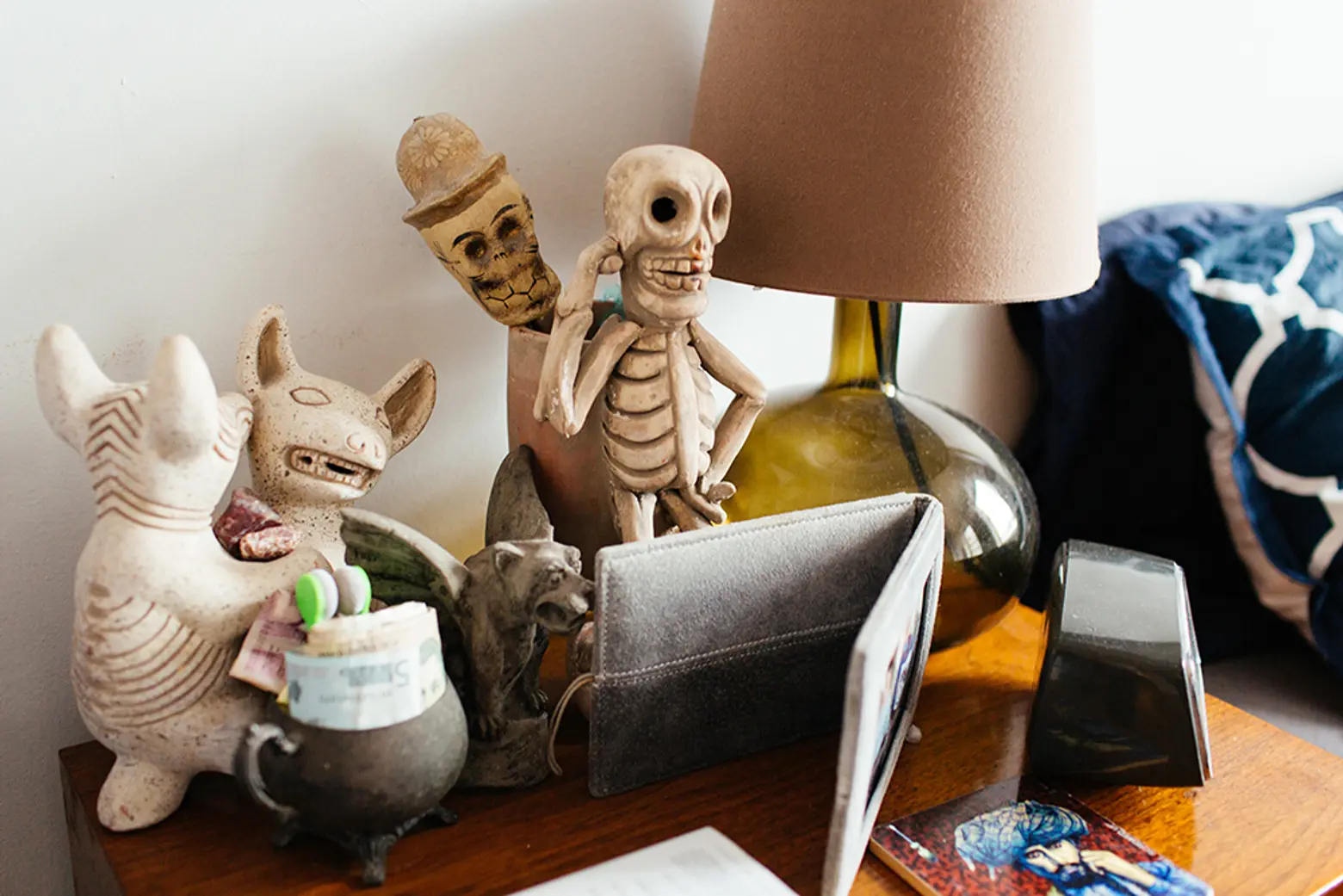 Most of the skeleton art found around the home comes from Mexico
Most of the skeleton art found around the home comes from Mexico
6sqft: Where do you draw inspiration for your work?
Stephen: The world. I reckon I’m kind of like a filter. Everything in the world I want to draw. I can walk by a person or an object. I don’t really overthink what I’m seeing.
One painting that I did that I saw you looking at was a “Bowl Full of Guns.” That was directly painted after the shooting at Sandy Hook with all those kids. And I just thought I had to say something about America’s crazy obsession with guns.
But most of my paintings are just about what’s in the world and the contradictions involved with man, nature, machinery, humanity, religion and sexuality; all those contradictions thrown together. I try and make beautiful paintings that make me think, smile and question things.
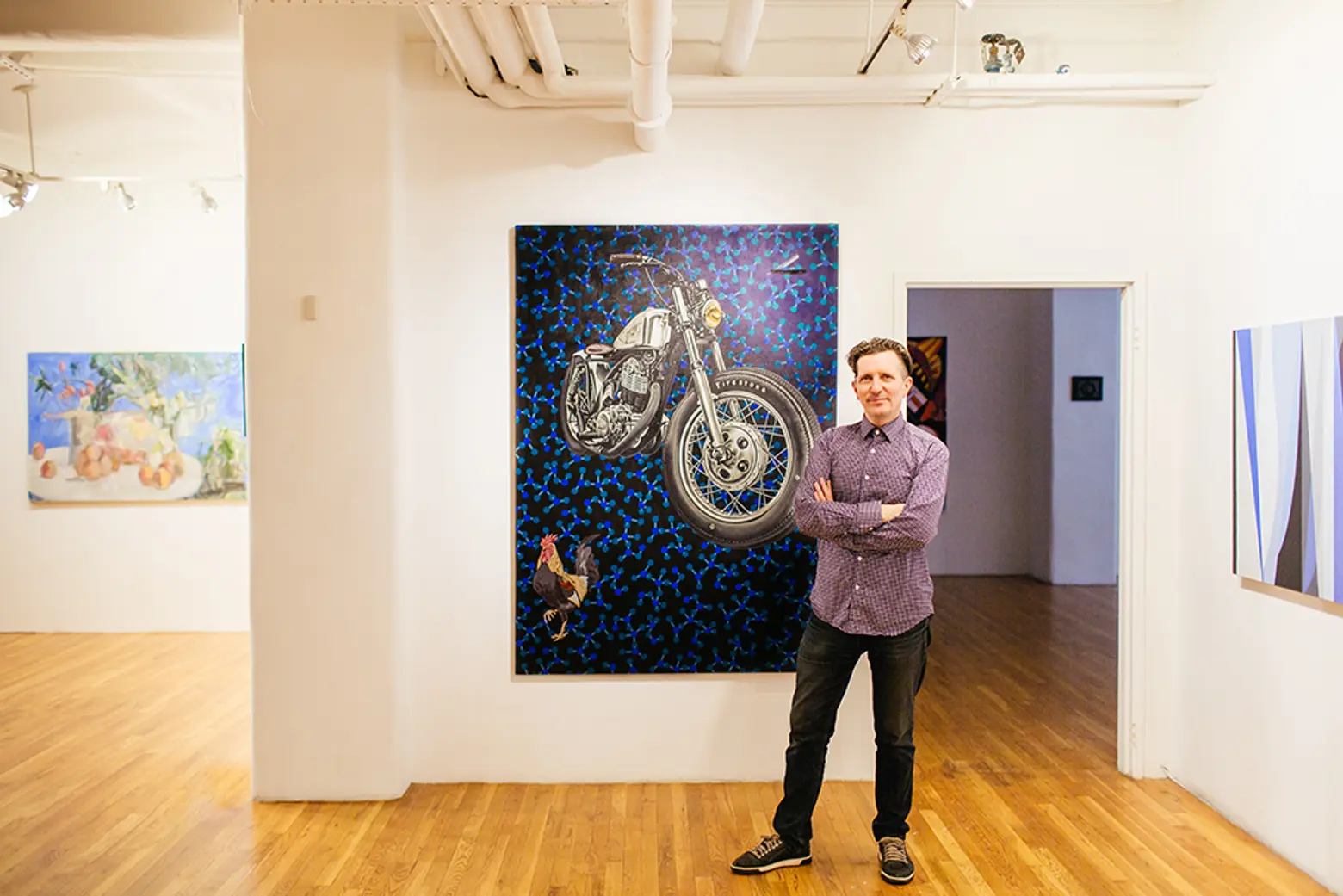 His large paintings take about two months to complete, while the smaller ones take a month. He tries to work every day. Above: “Molecular Motivation”
His large paintings take about two months to complete, while the smaller ones take a month. He tries to work every day. Above: “Molecular Motivation”
6sqft: All of your pieces include a small figure somewhere on the canvas and they’re usually something organic. Is there a reason for this?
Stephen: Well, they’re essentially compositional devices. For example, if I just painted a motorbike and left it in that space, it’d just be a painting of a motorbike. But if I’ve got the rooster walking off to the left, your eye gets kind of drawn in and then you think “What the hell is that?” But once you’ve done that, you’ll notice that other object up in the other corner and you’ll start going around the painting and maybe saying, “Well what’s that in the background?” “How is that related to that?” And that’s it. I’ve got you. I’ve got your attention and you thinking. Quite often it’s done to be humorous, but I’ll sometimes have something serious in there too.
6sqft: You have a very technical approach to painting.
Stephen: I’m completely self taught. I never really felt the need to be an expressive, drippy or messy painter. When I construct a painting, it’s very serious. I draw with a straight line and a clean edge. I never want any child or someone who’s not involved in the arts to go, “Oh, I could do that.” And then dismiss the work. Not that there’s anything wrong with expressive painting, it’s just that’s not my thing. I want to draw you in, stop you in your tracks, and have you look at it.
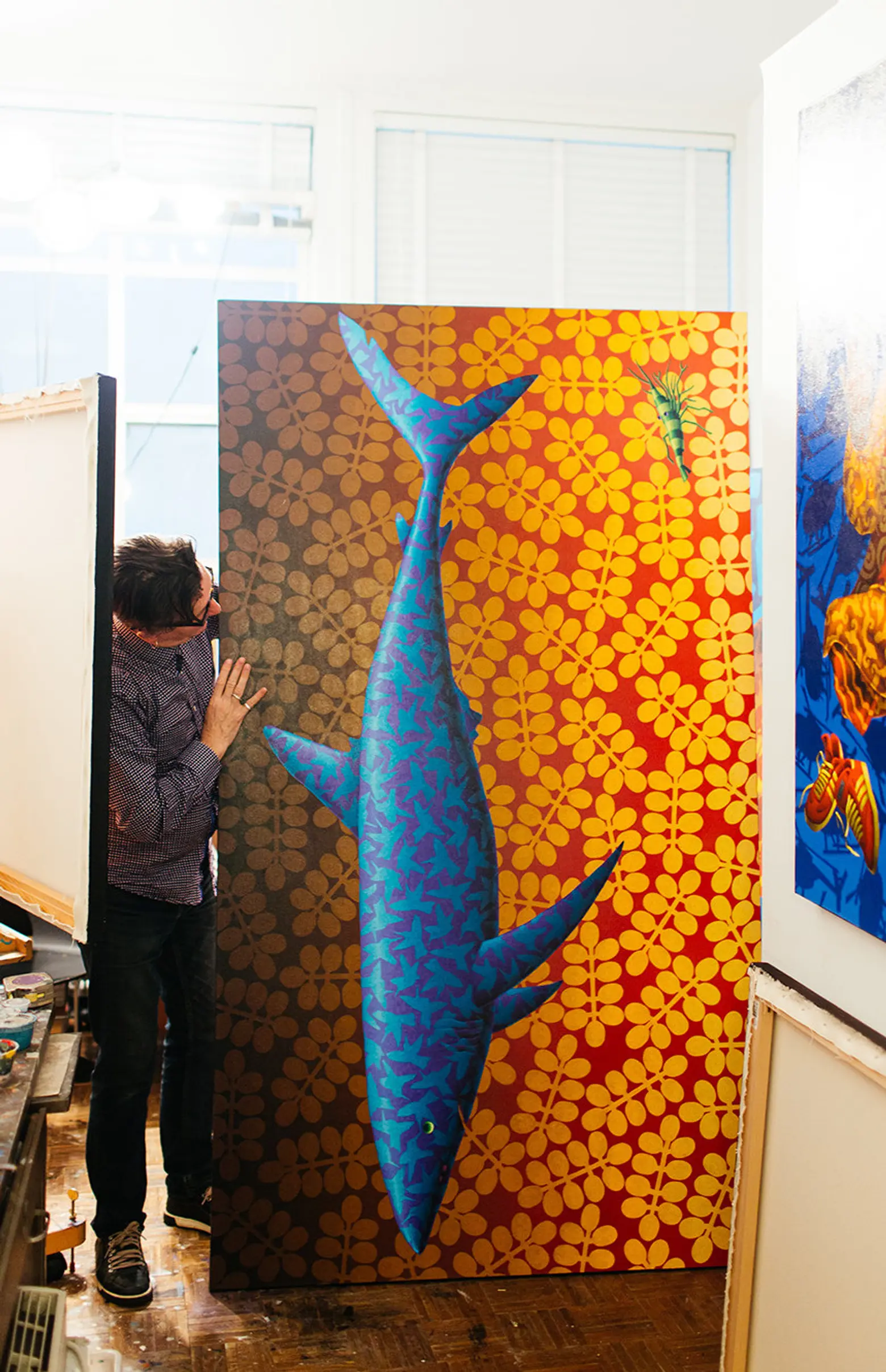 Stephen recently sold the above painting, which will soon be en route to the Cayman Islands. To close the sale, the only stipulation the buyer gave Stephen was that he and his family would have to fly it down to the islands and hang it (the trip paid for by the buyer, of course).
Stephen recently sold the above painting, which will soon be en route to the Cayman Islands. To close the sale, the only stipulation the buyer gave Stephen was that he and his family would have to fly it down to the islands and hang it (the trip paid for by the buyer, of course).
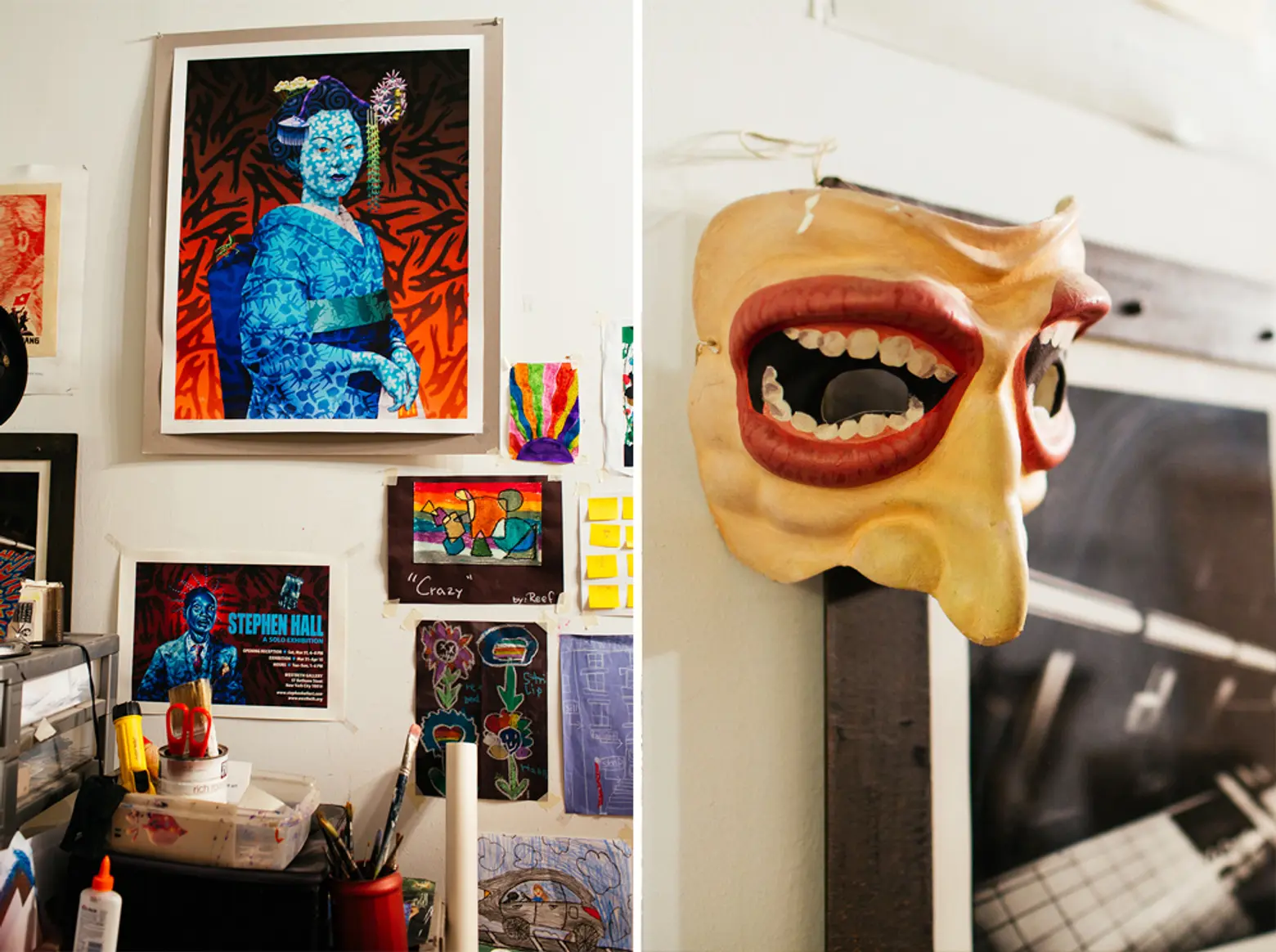 The mask to the right was made for a Rick Ocasek video. Stephen frequently works on music videos.
The mask to the right was made for a Rick Ocasek video. Stephen frequently works on music videos.
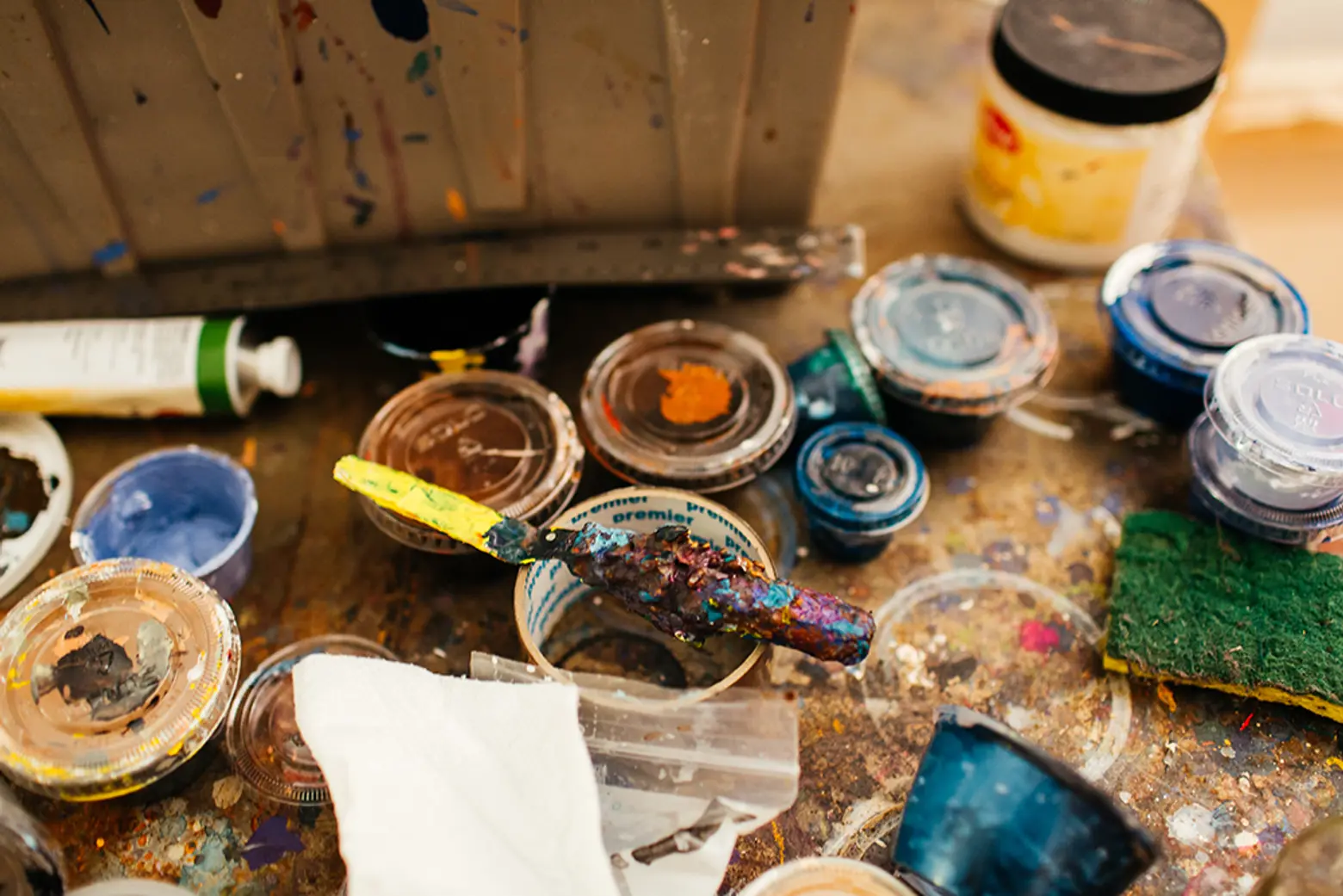 He’s been using the same palette knife for the last 35 years
He’s been using the same palette knife for the last 35 years
6sqft: Yes, and I think that’s why so many people are put off by modern art. The rationale behind a lot of it has become “Oh, it’s making you talk. It’s doing its job.” It doesn’t even matter what it is, and it has very little to do with technique.
Stephen: Exactly. I build my own stretchers, I stretch the canvas. I draw with a pencil. It’s the process that interests me. If I’m going to be an artist, that’s the kind of artist I am; you know from start to finish it’s mine.
6sqft: Is this been what you’ve been doing your entire life?
Stephen: Yes, since I was about three years old. My mother sat me behind the couch drawing. Since then I’ve just always done it.
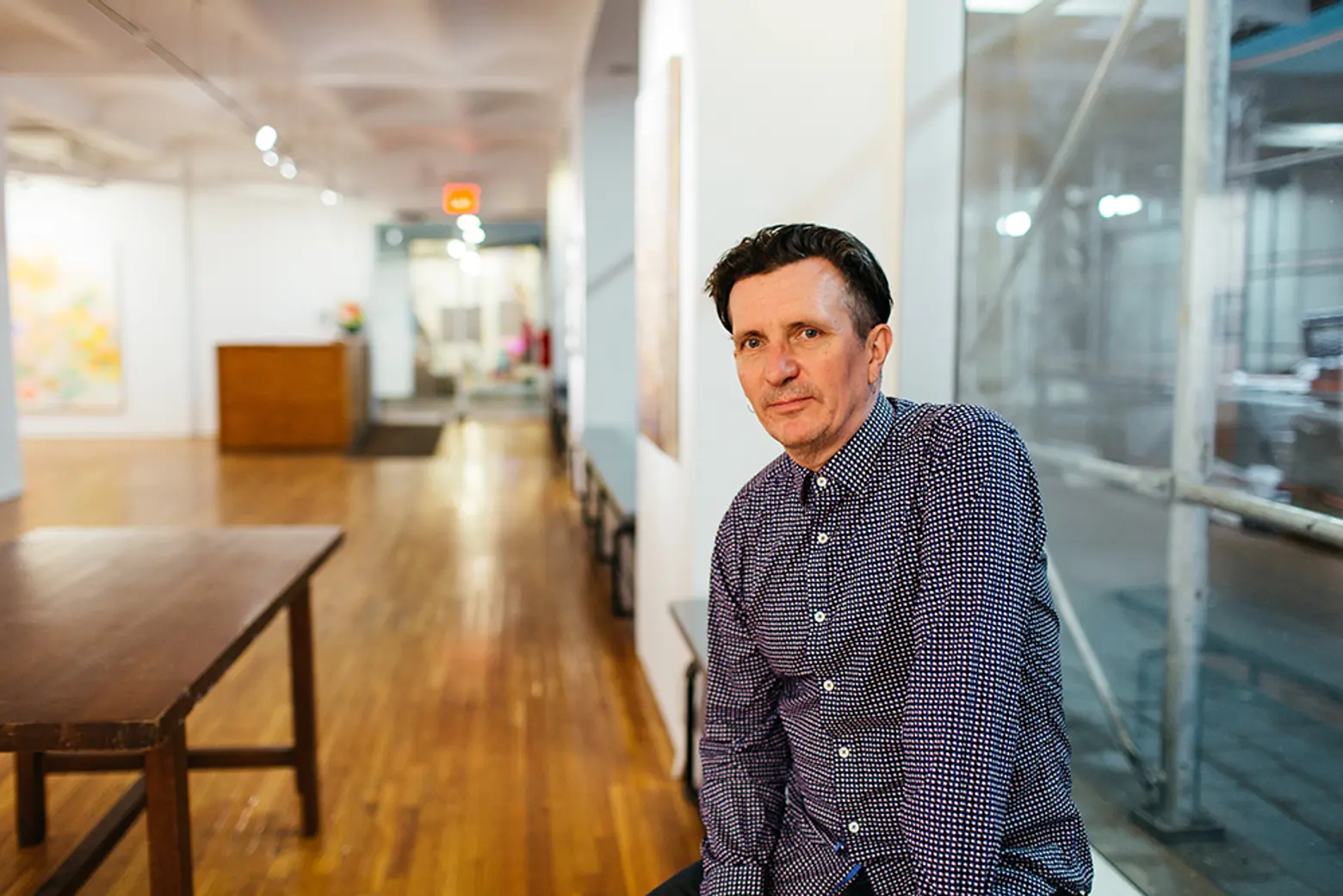
Follow Stephen Hall:
+ Official Site
+ Tumblr
+ Instagram
+++
RELATED:
- My 1,400sqft: Inside Puppet Maker Ralph Lee’s Live/Work Space in Westbeth Artists Housing
- My 1,680sqft: Artist Anne Peabody Invites Us Into Her Landmarked Clinton Hill Carriage House
- My 900sqft: Tour the Romantic Prospect Heights Home of Two Brooklyn Entrepreneurs
All photos taken by Erin Kestenbaum exclusively for 6sqft. Photos are not to be reproduced without written permission from 6sqft.
